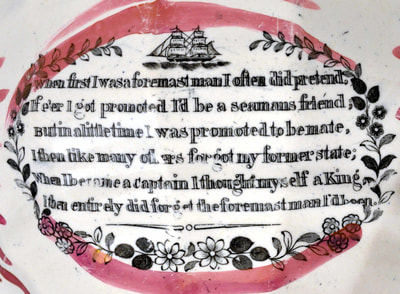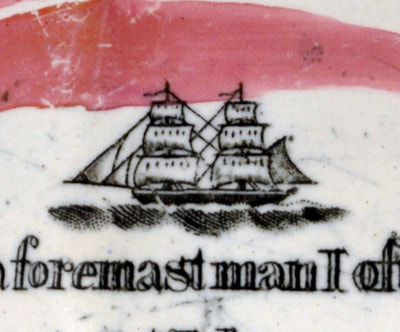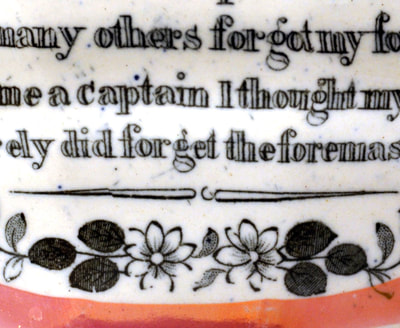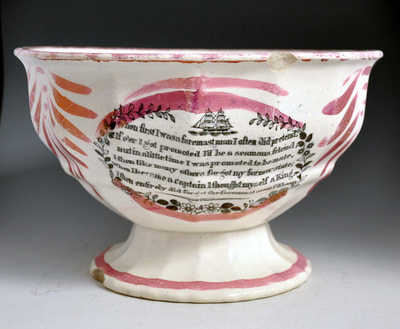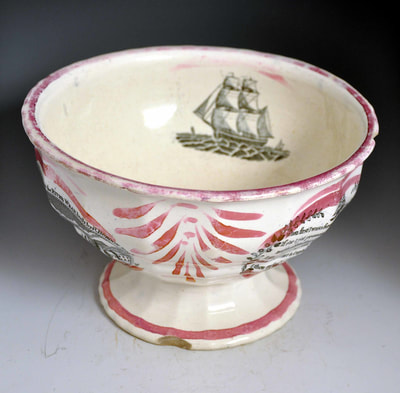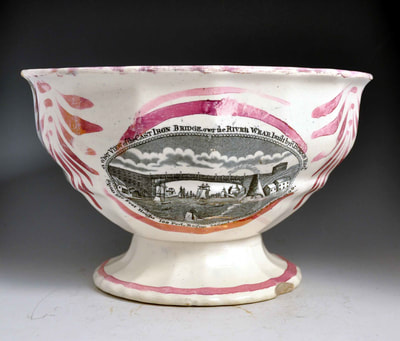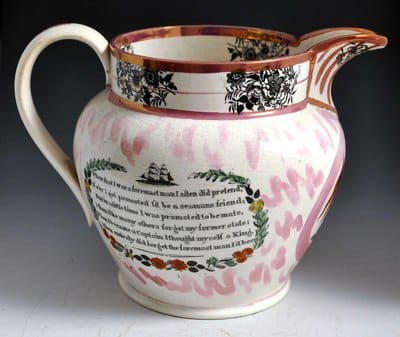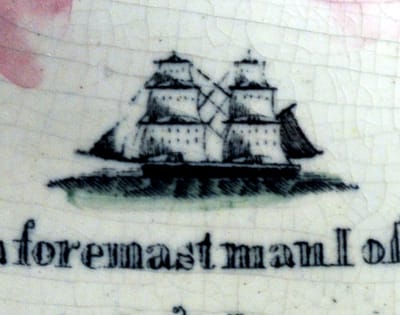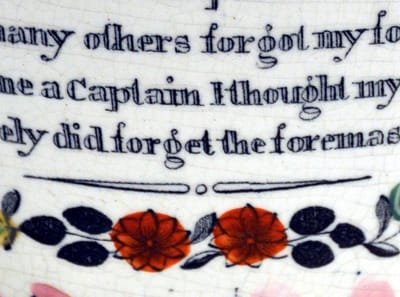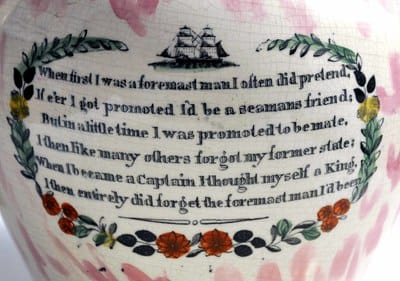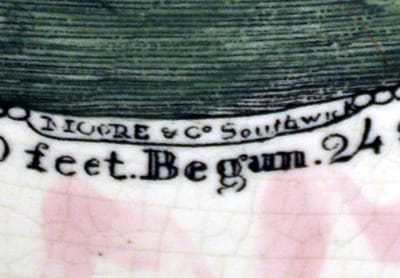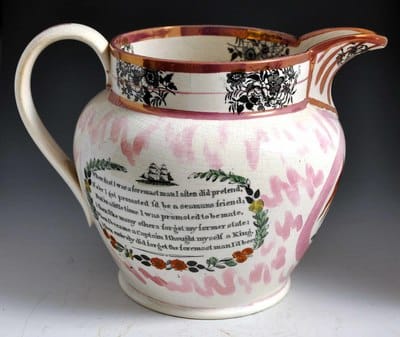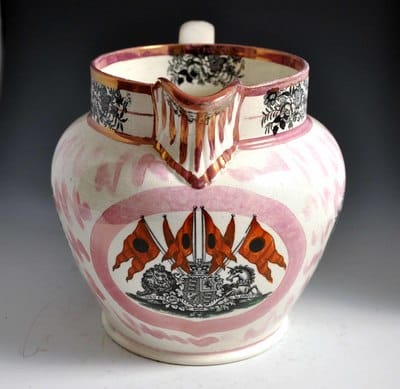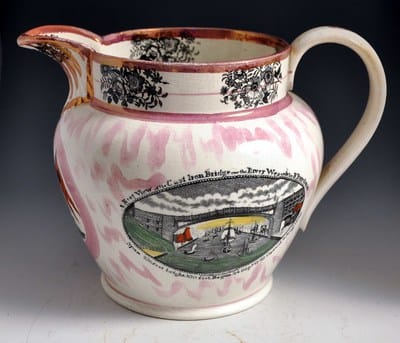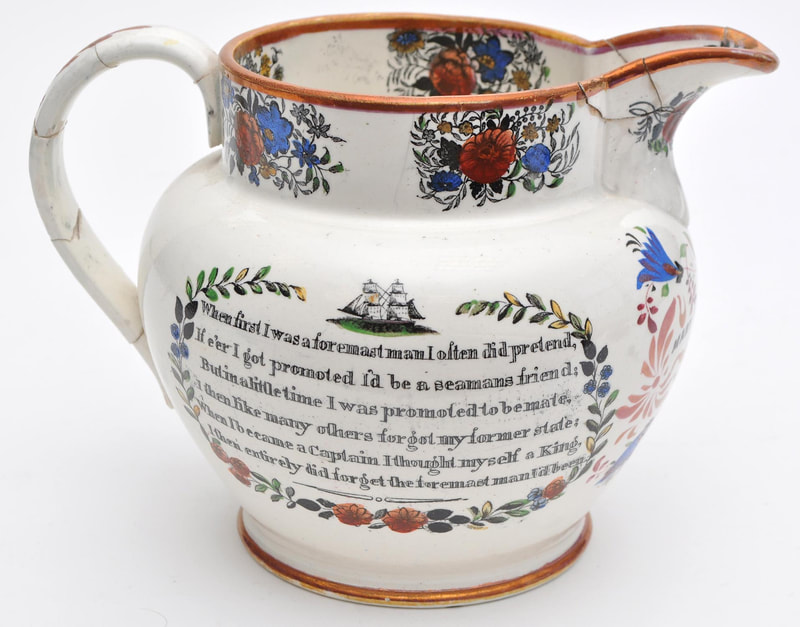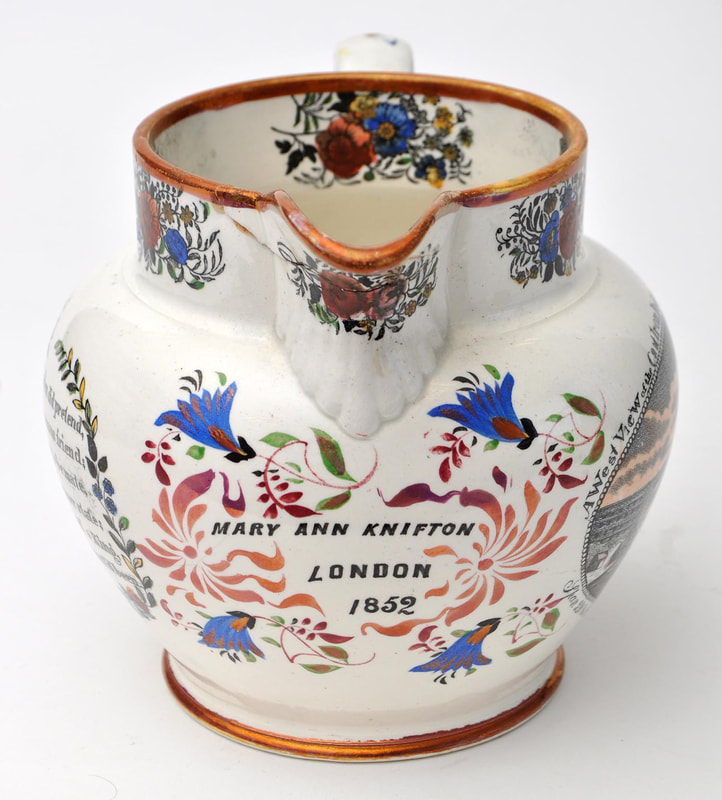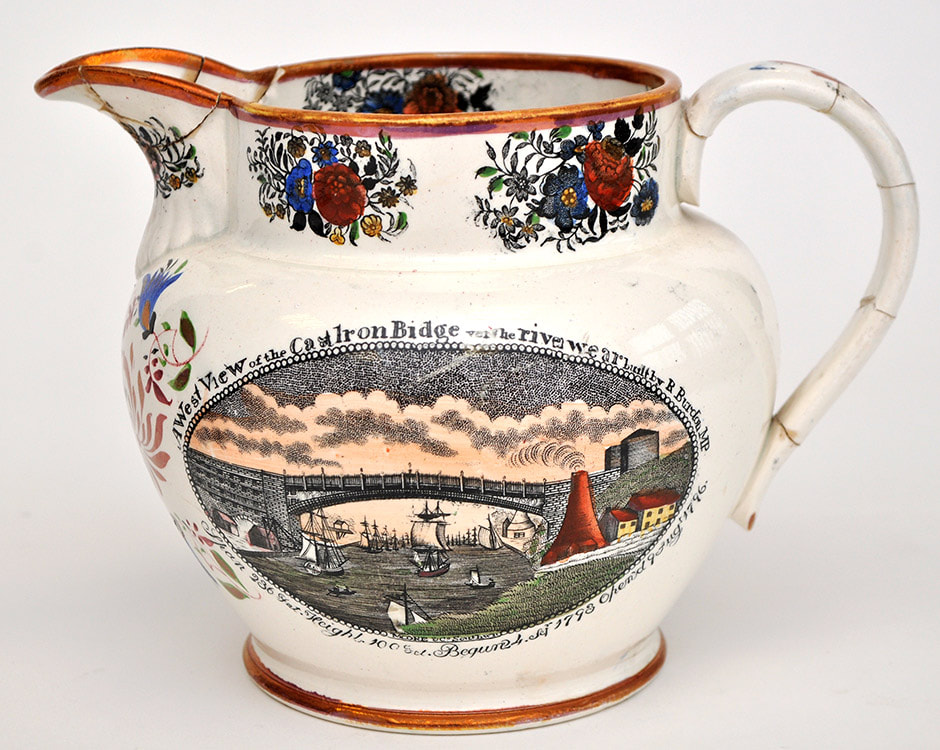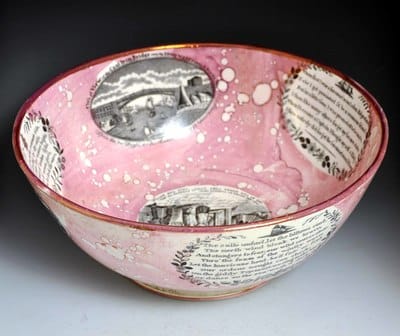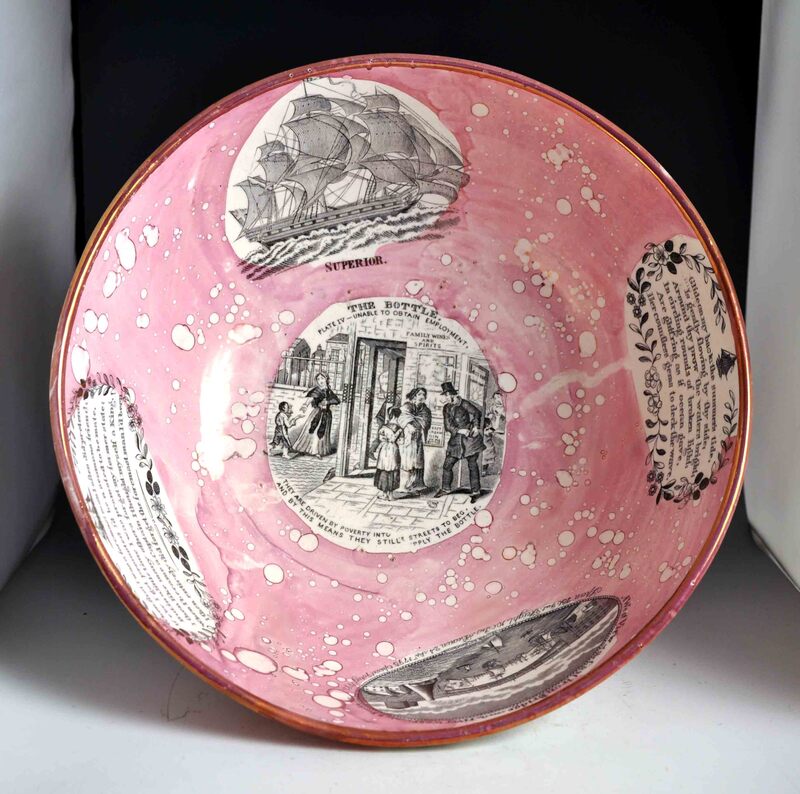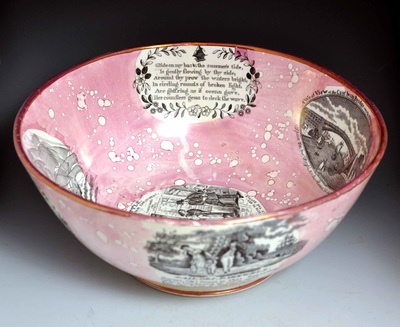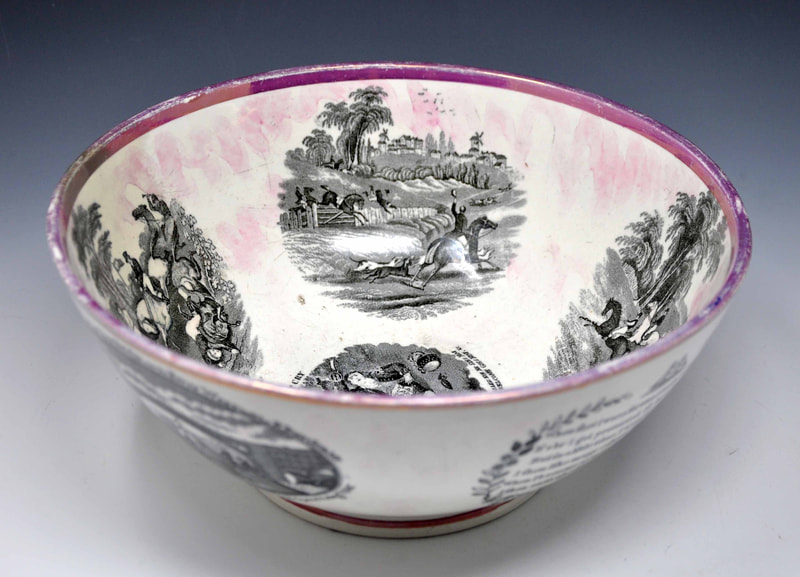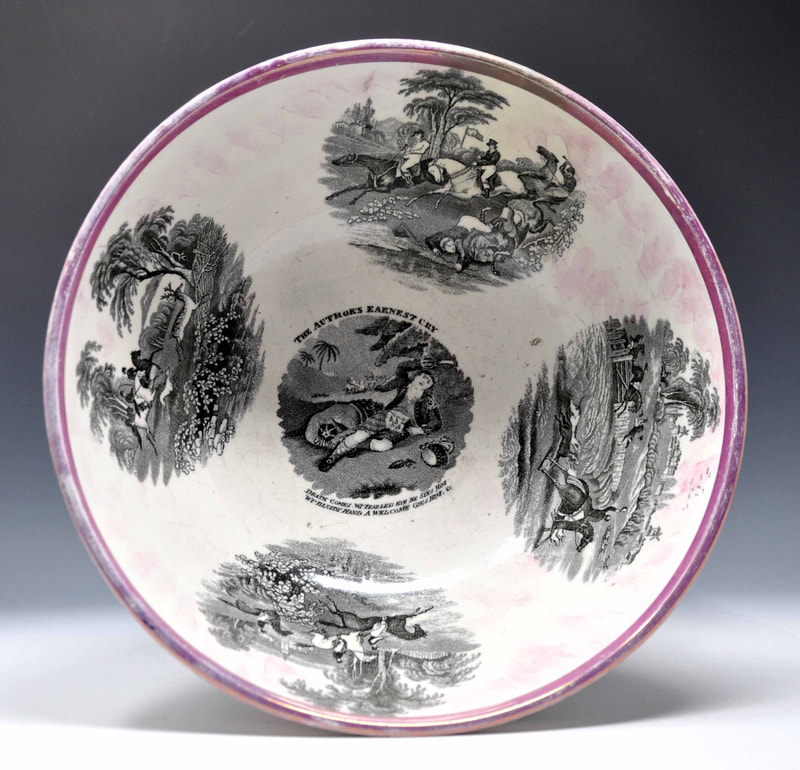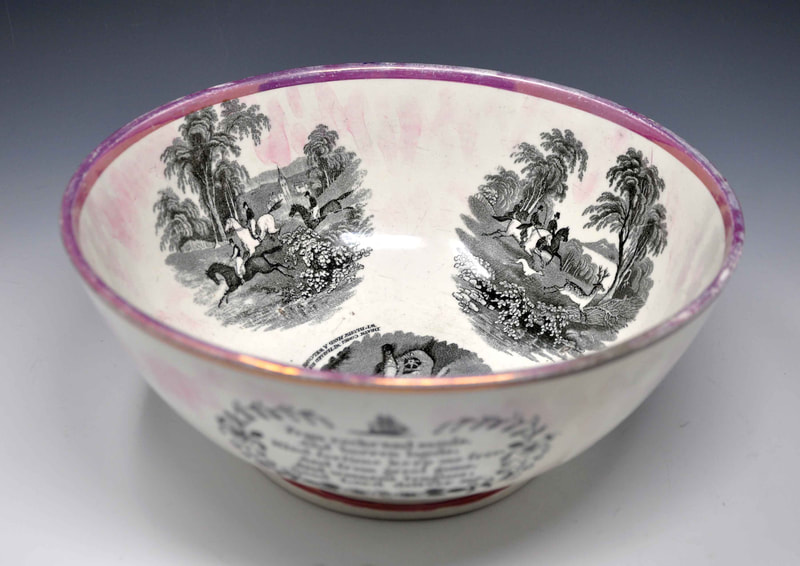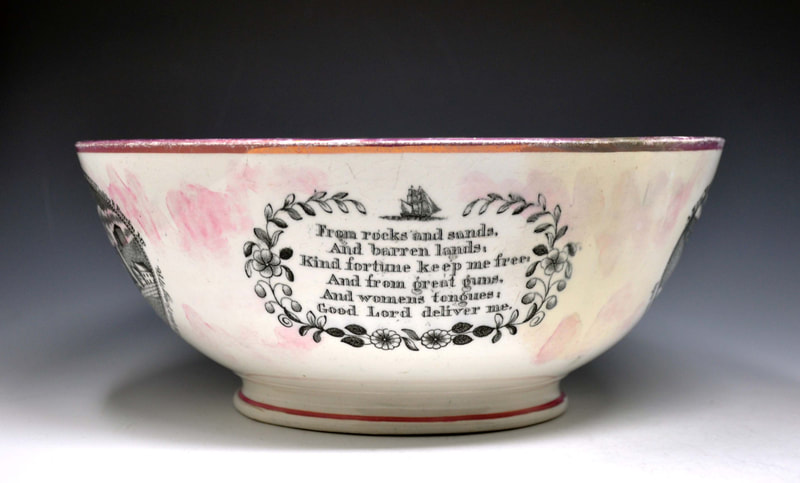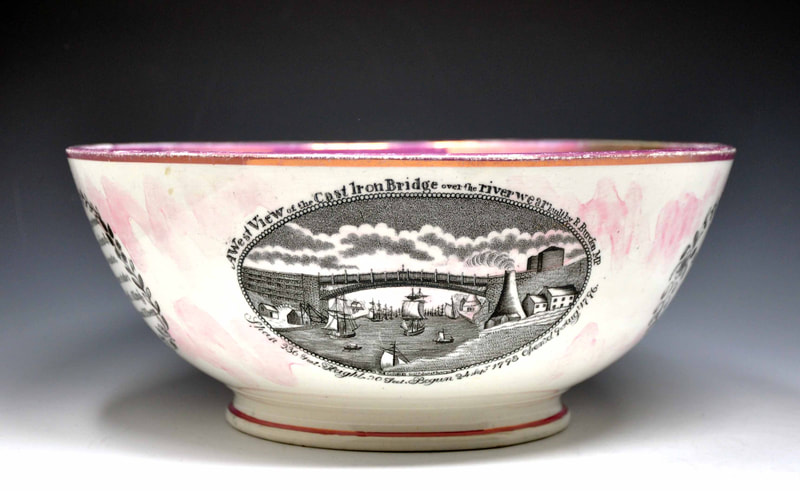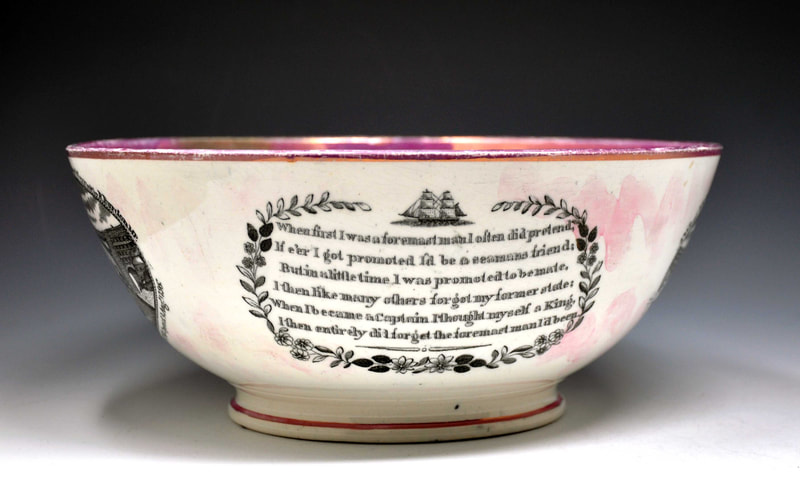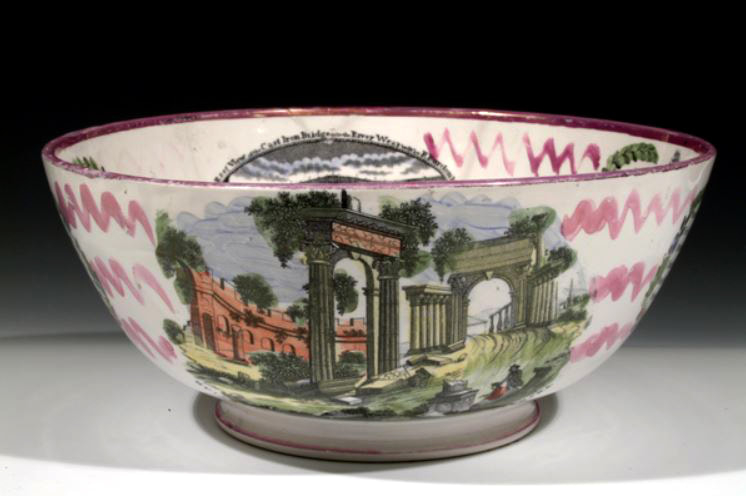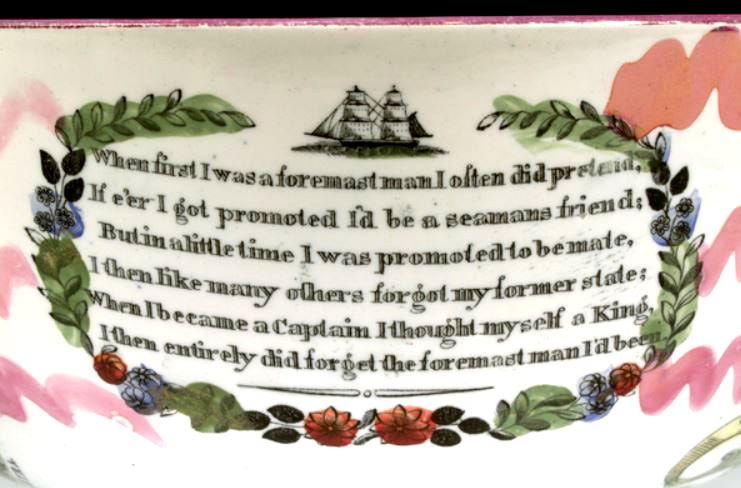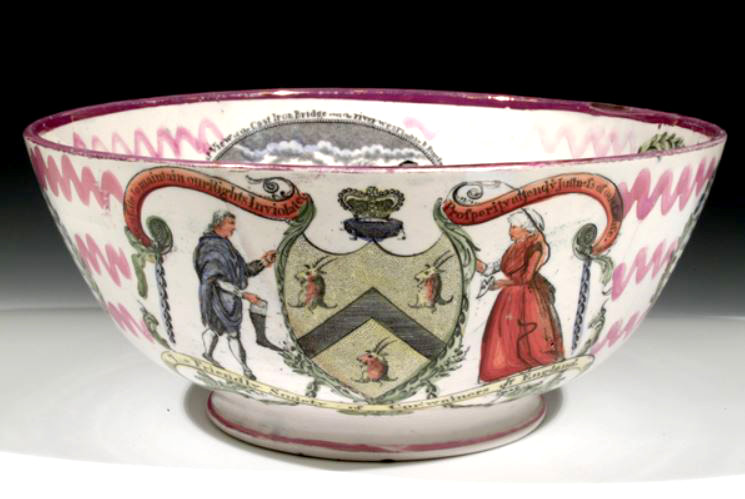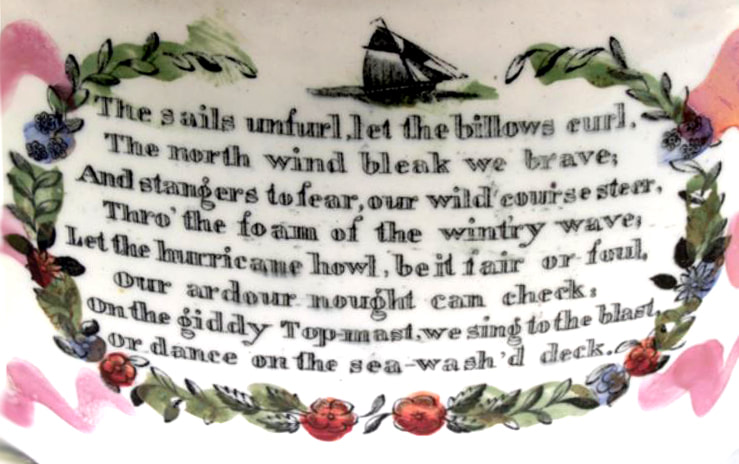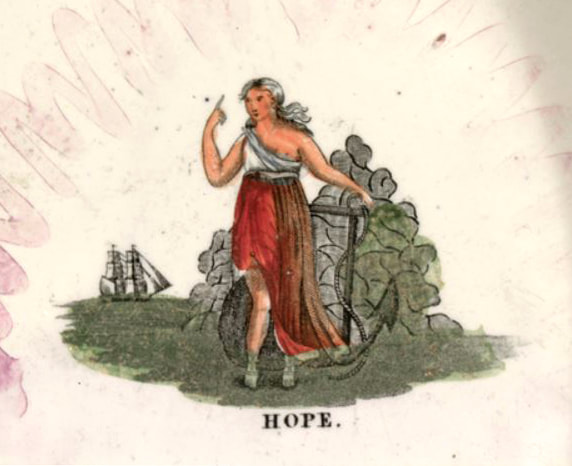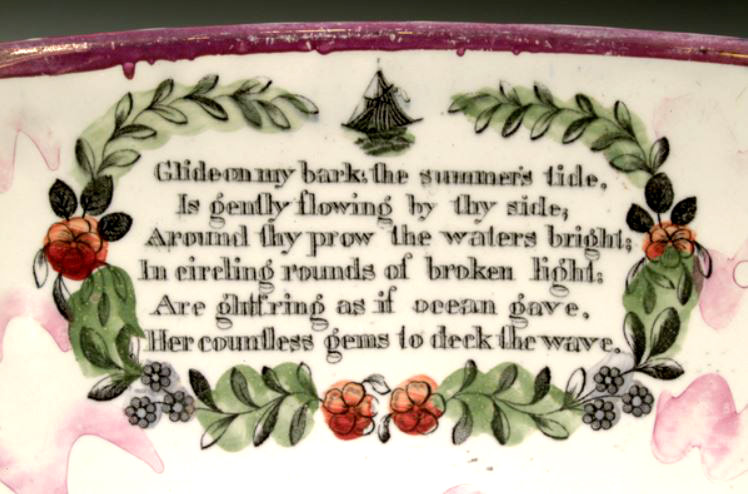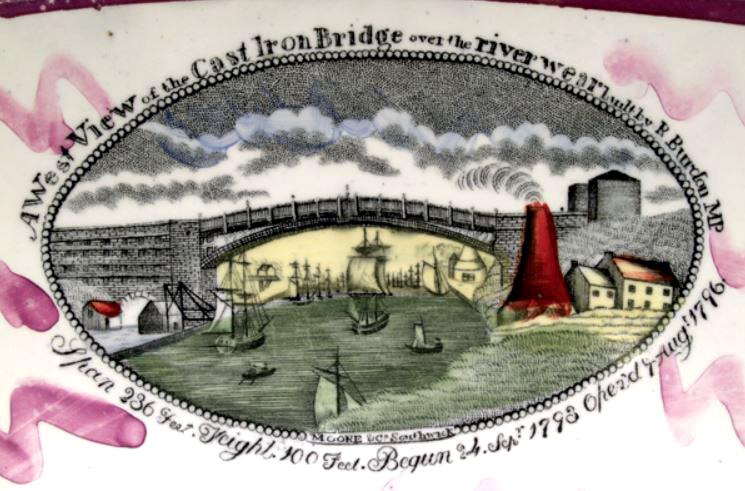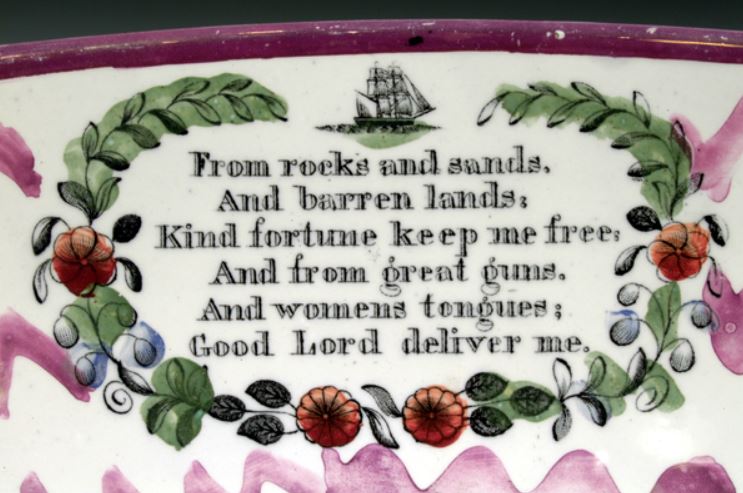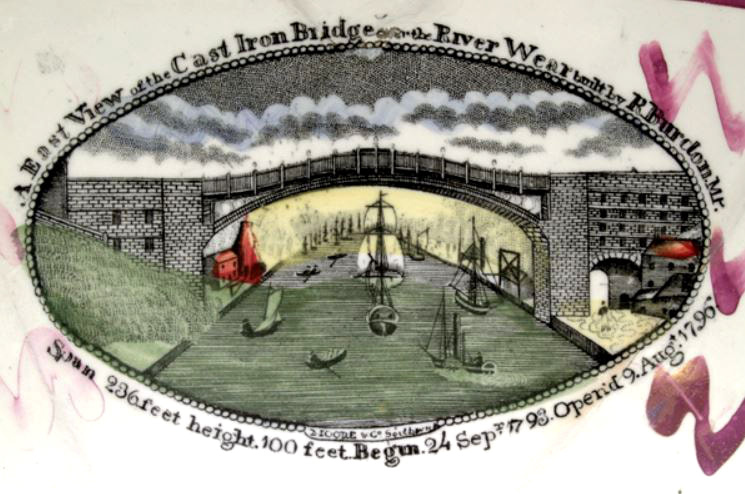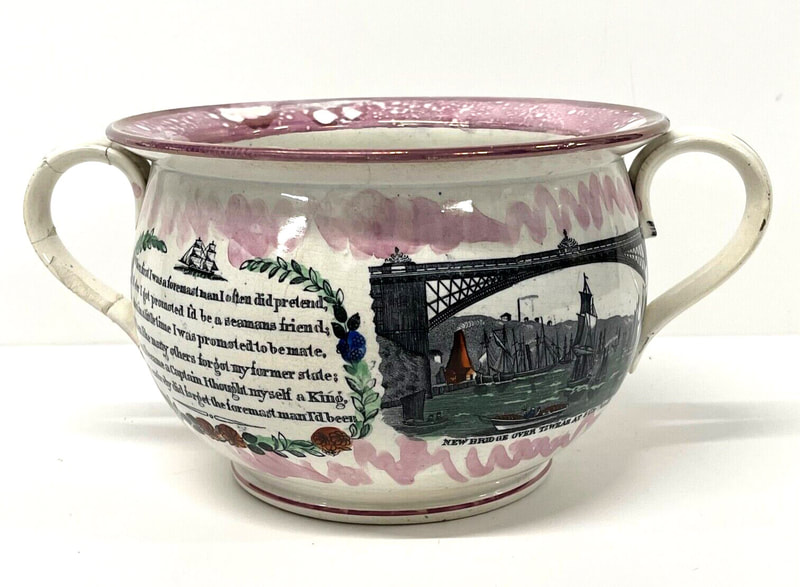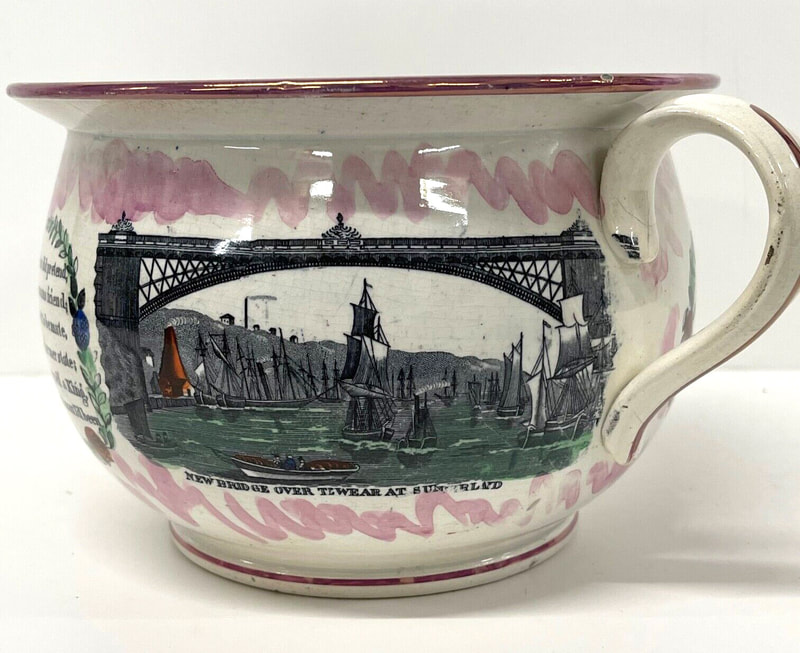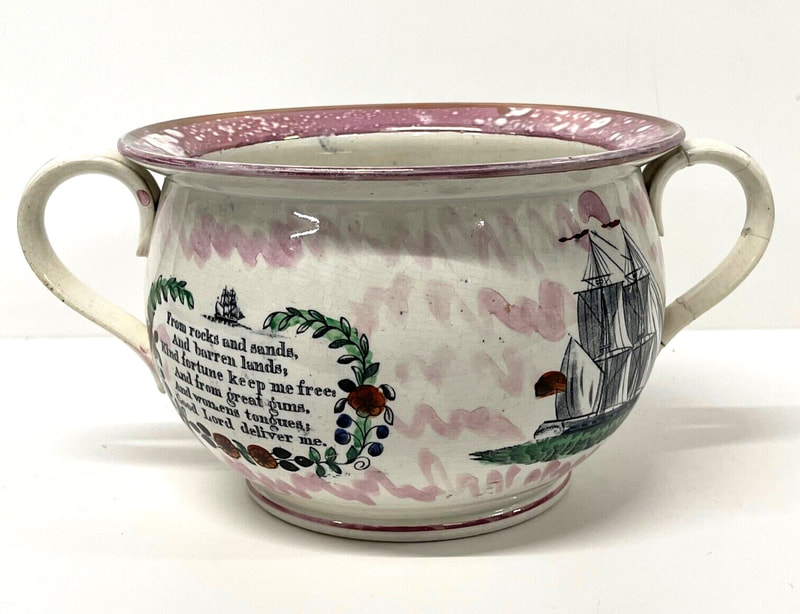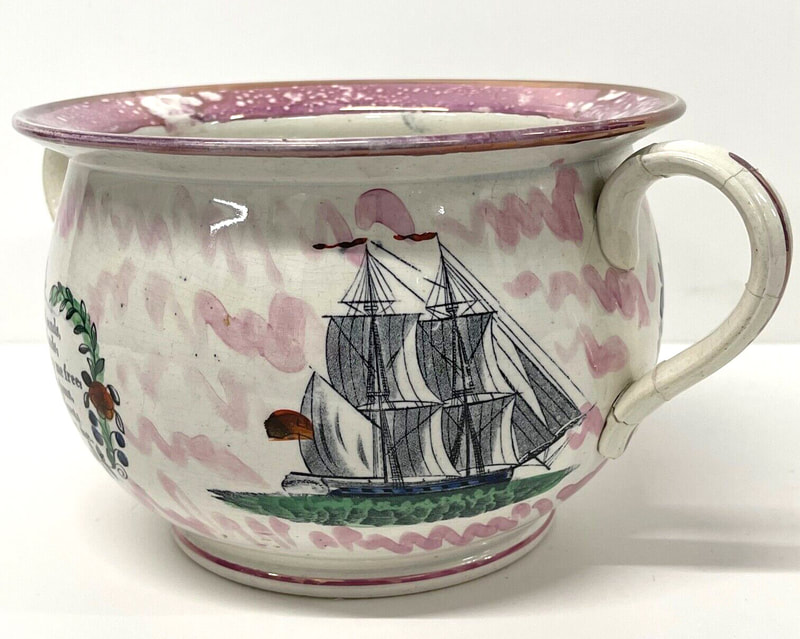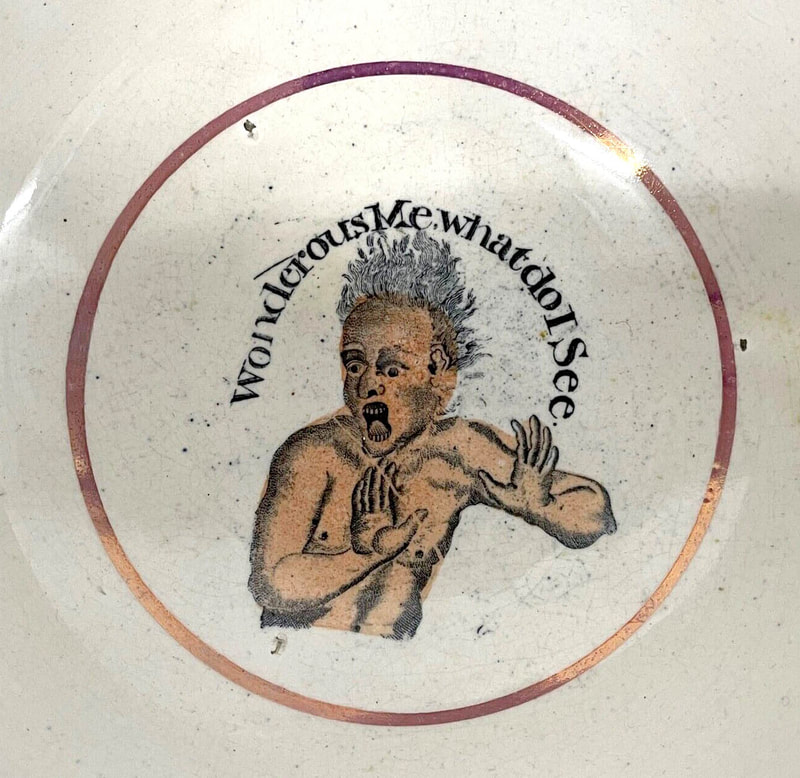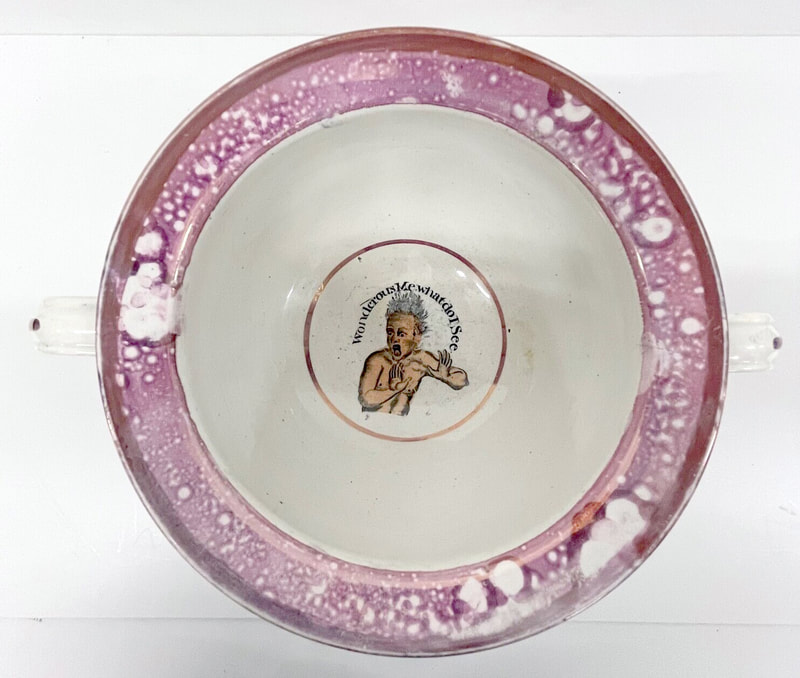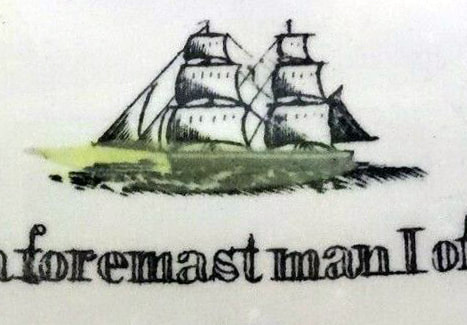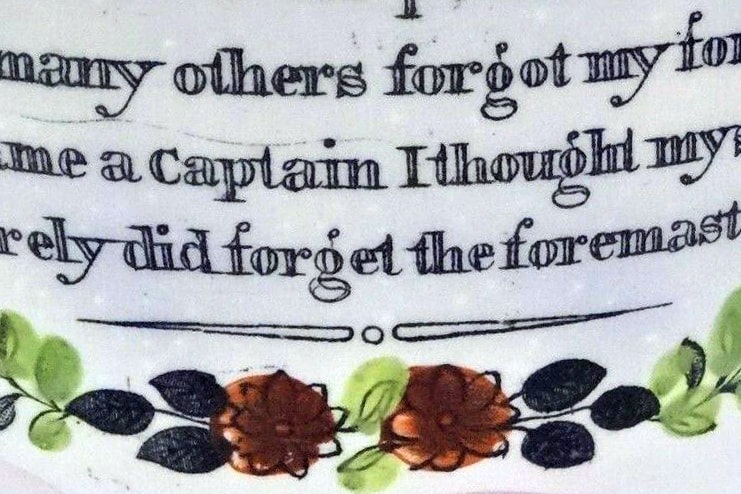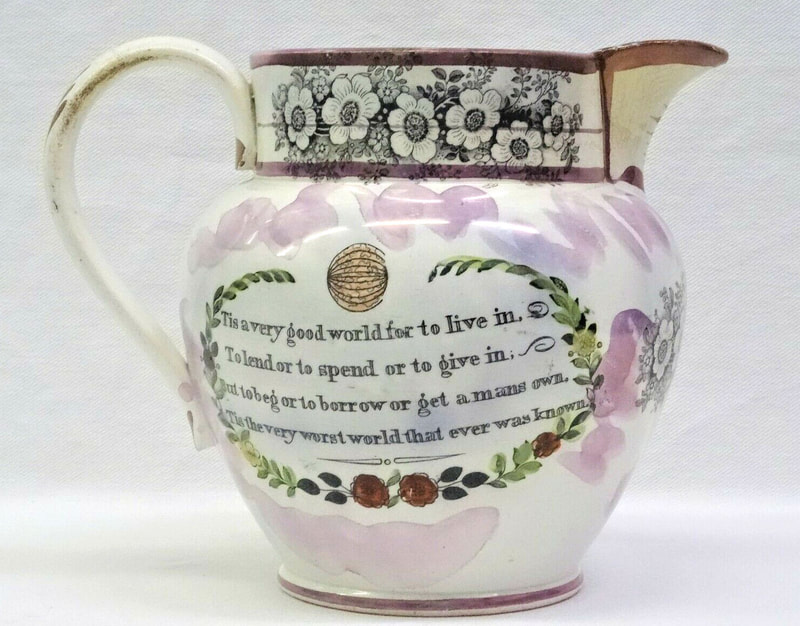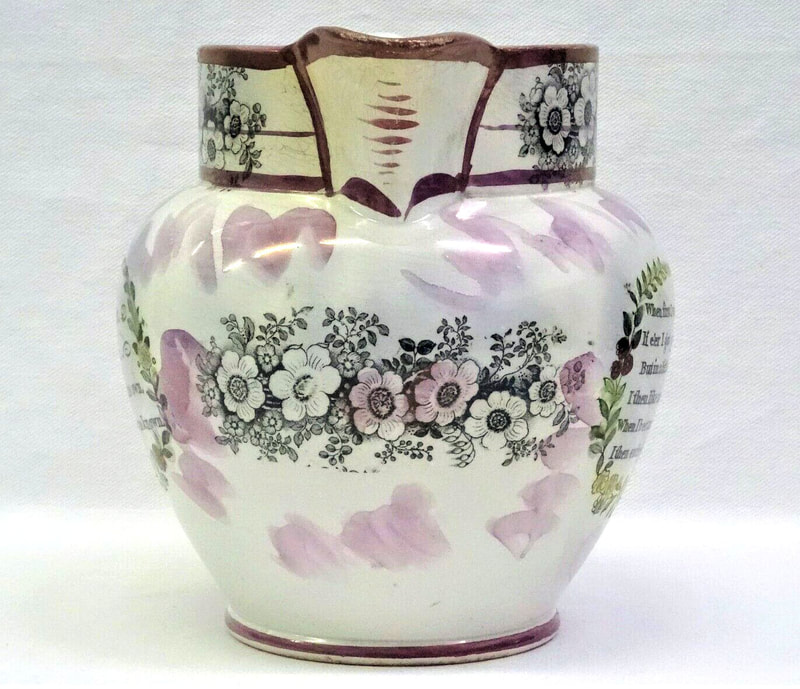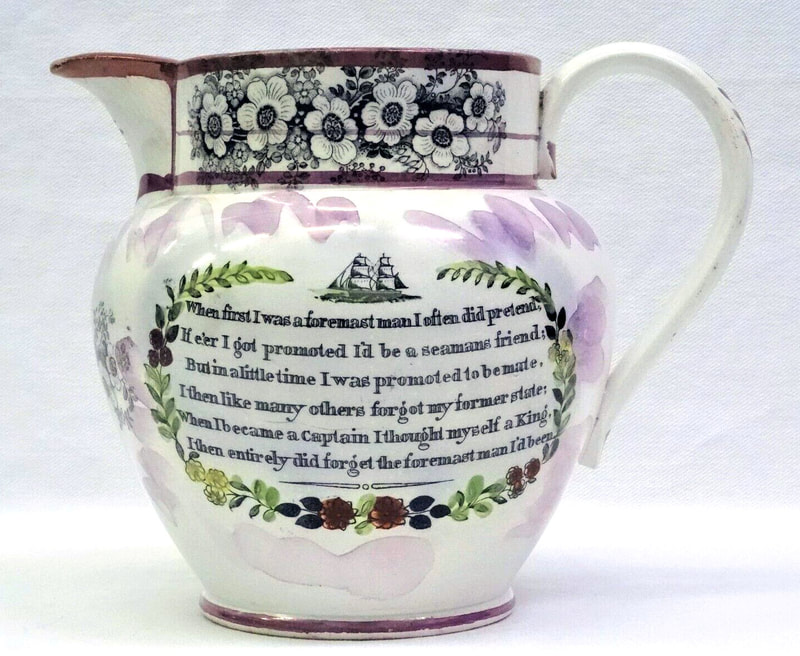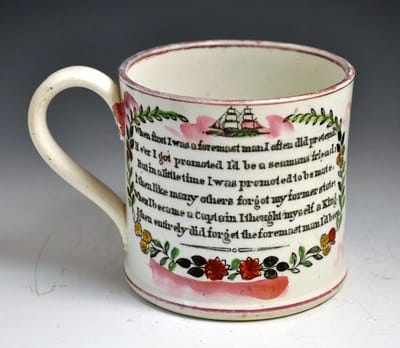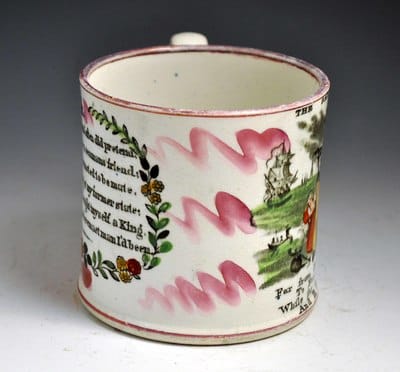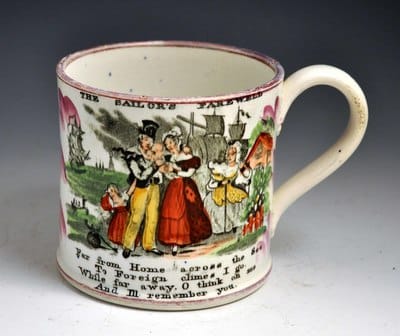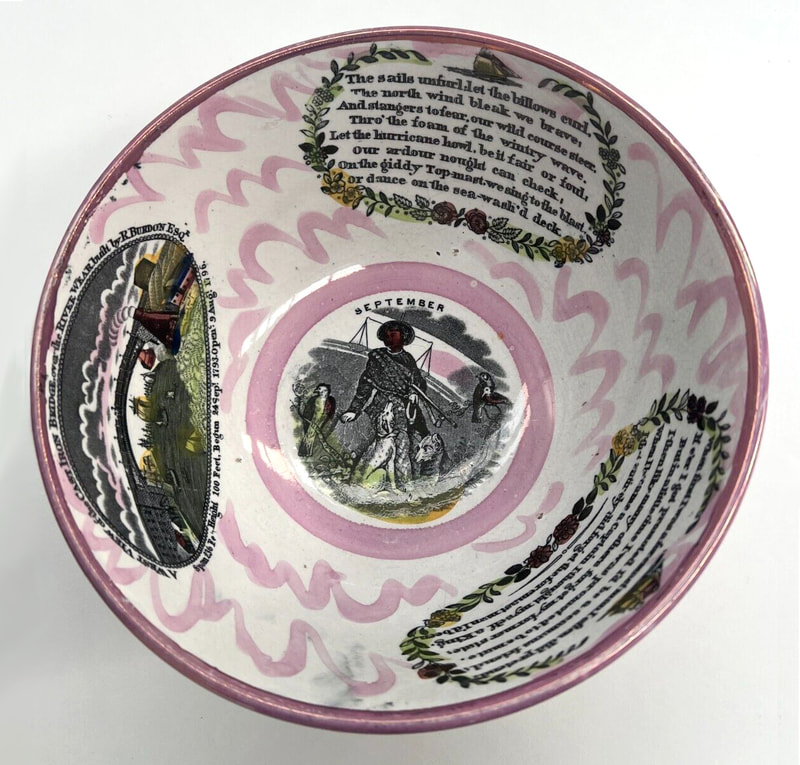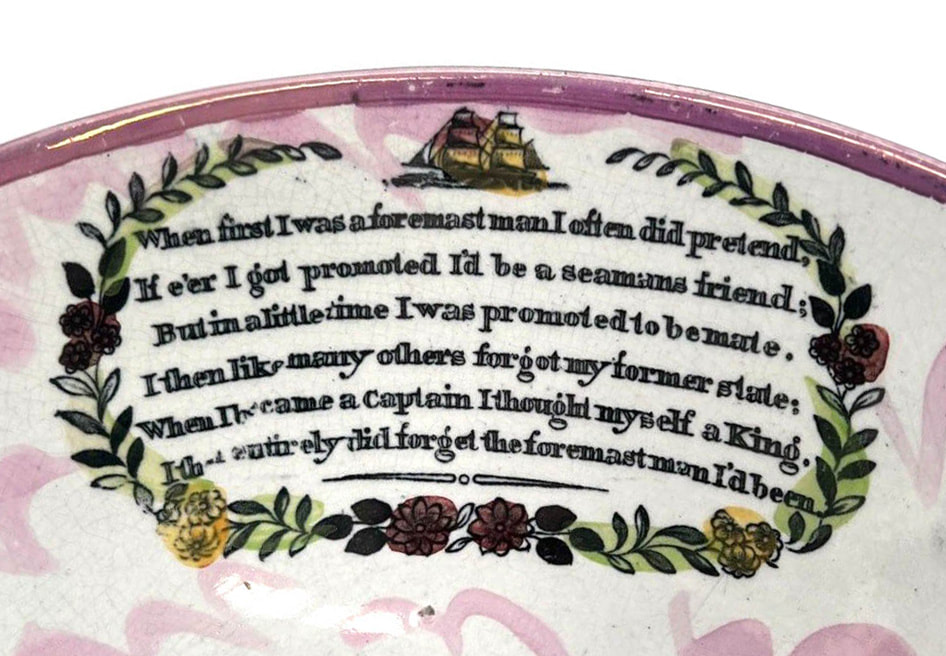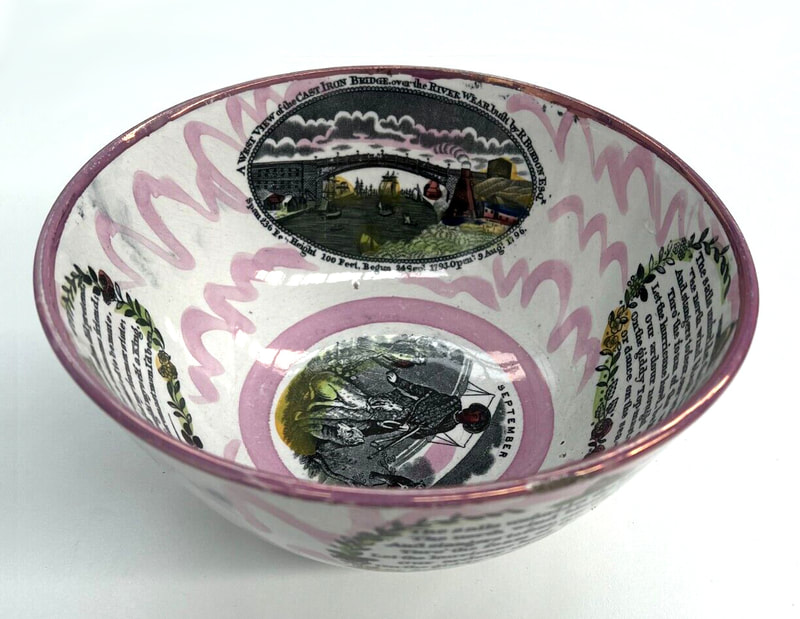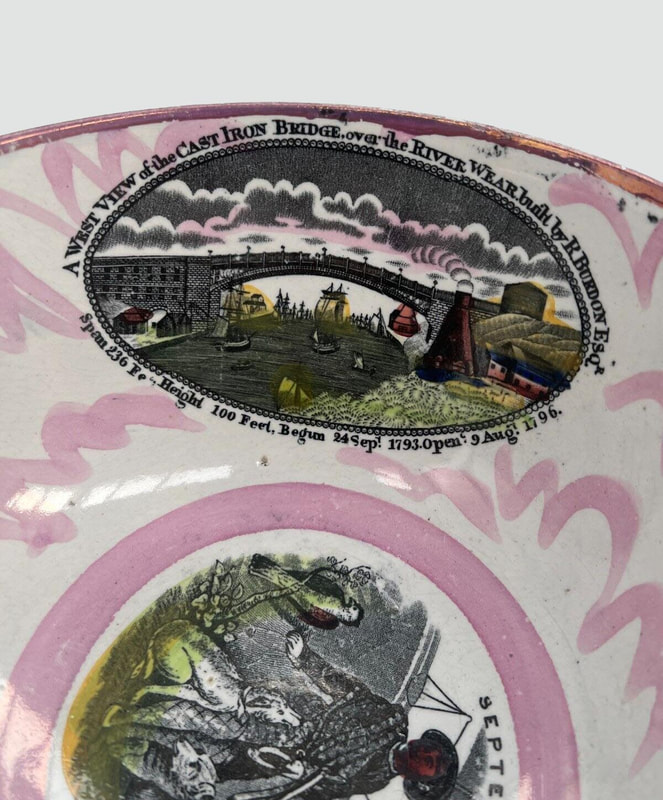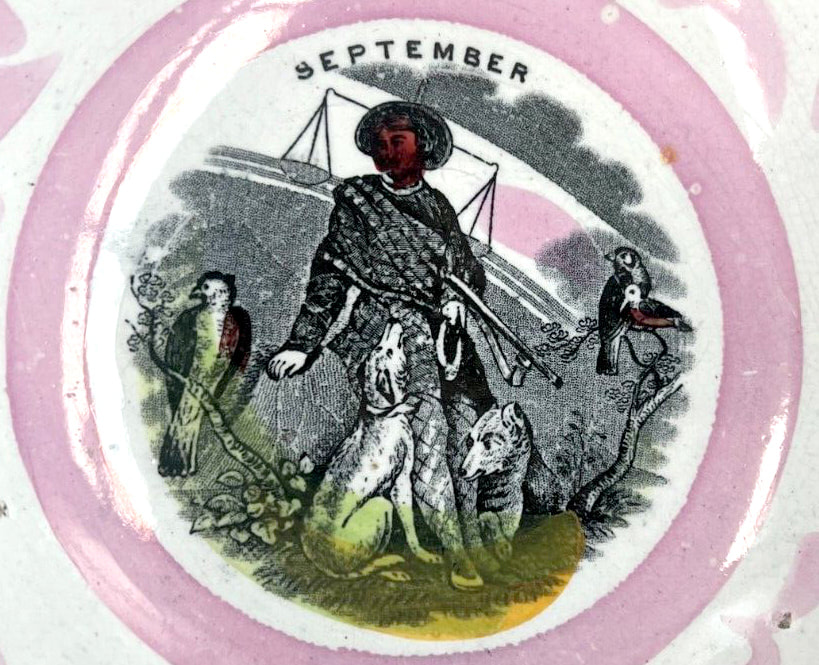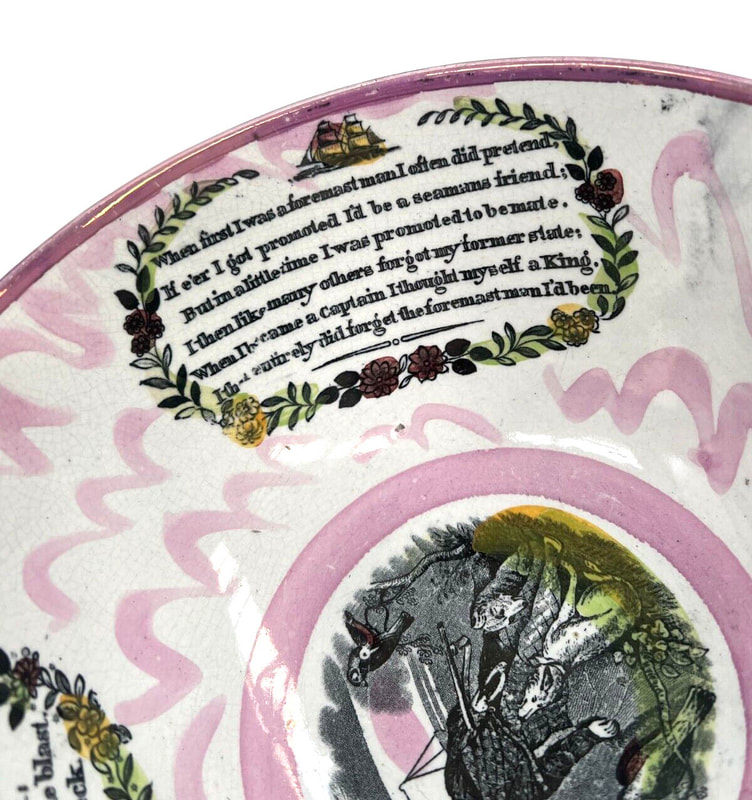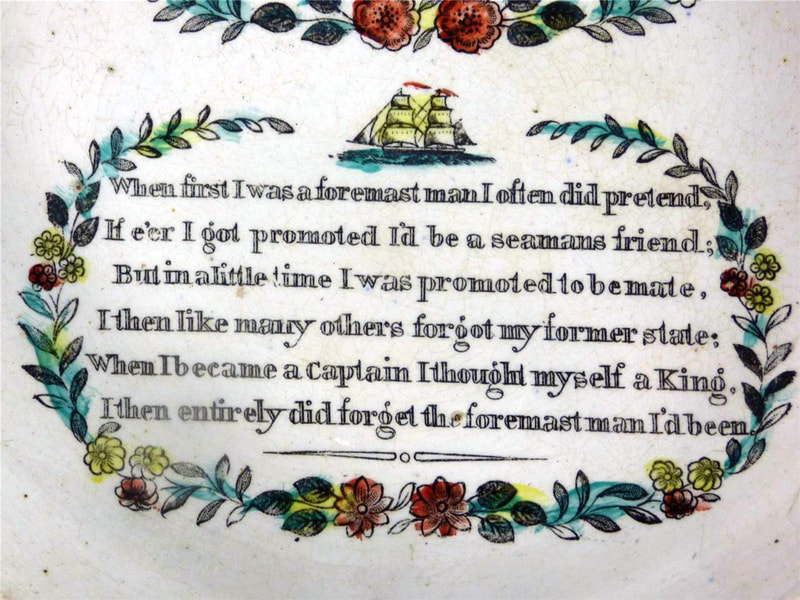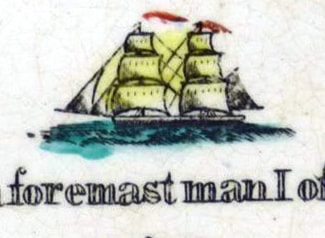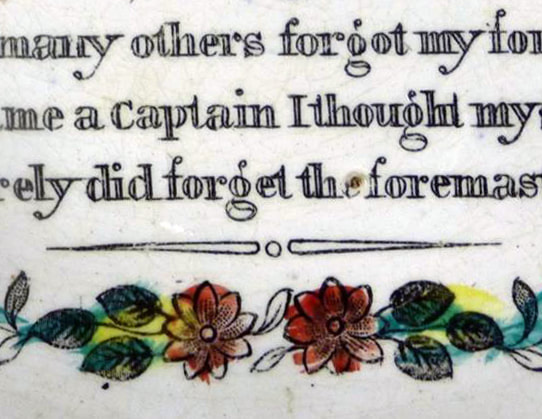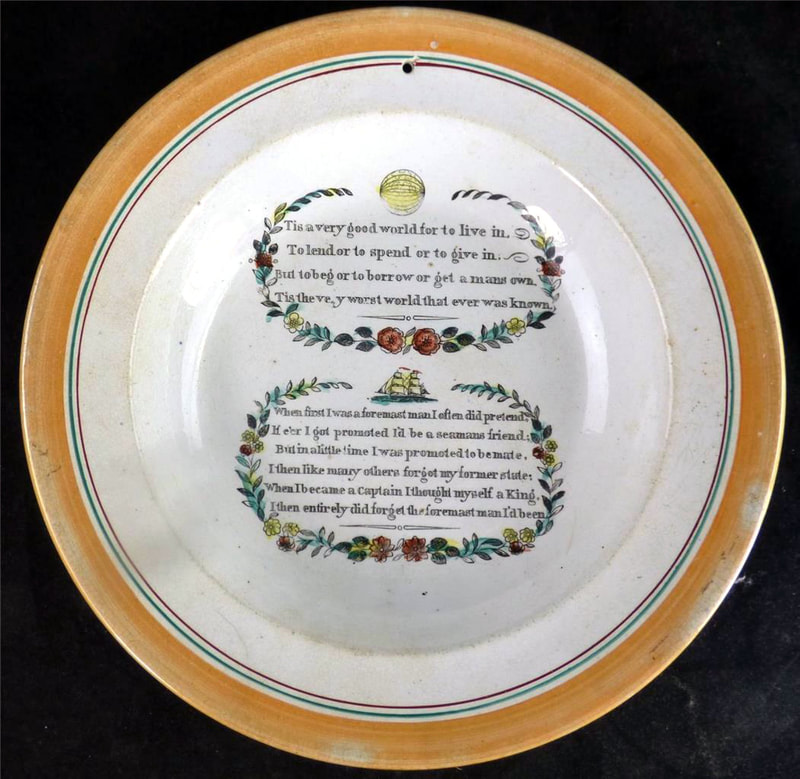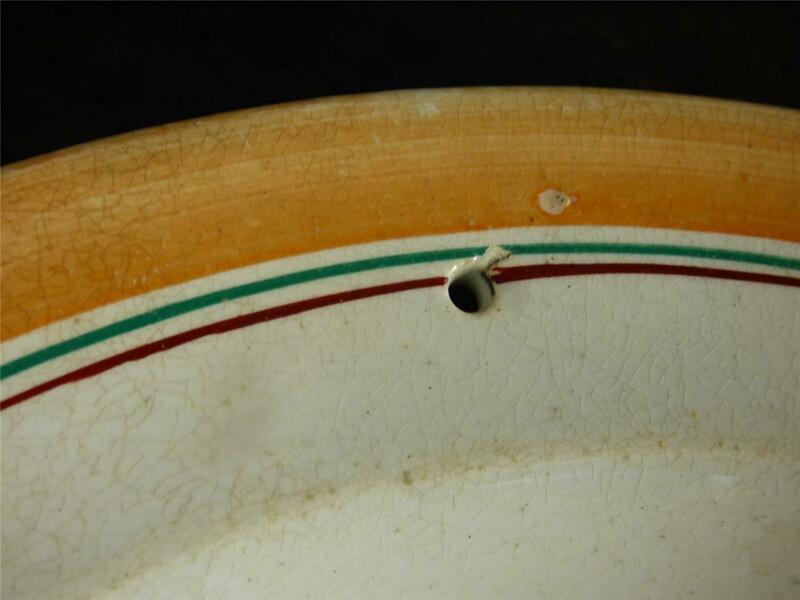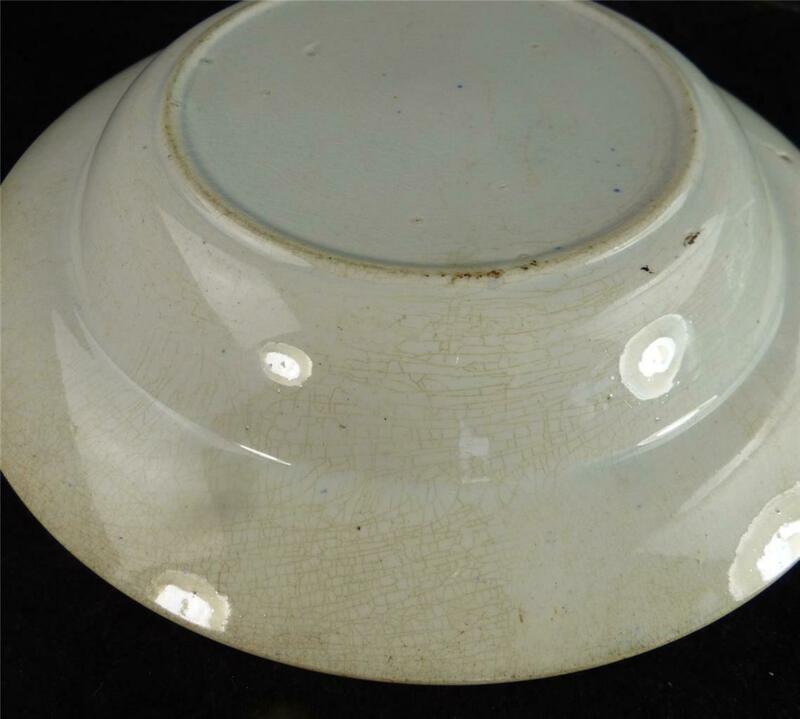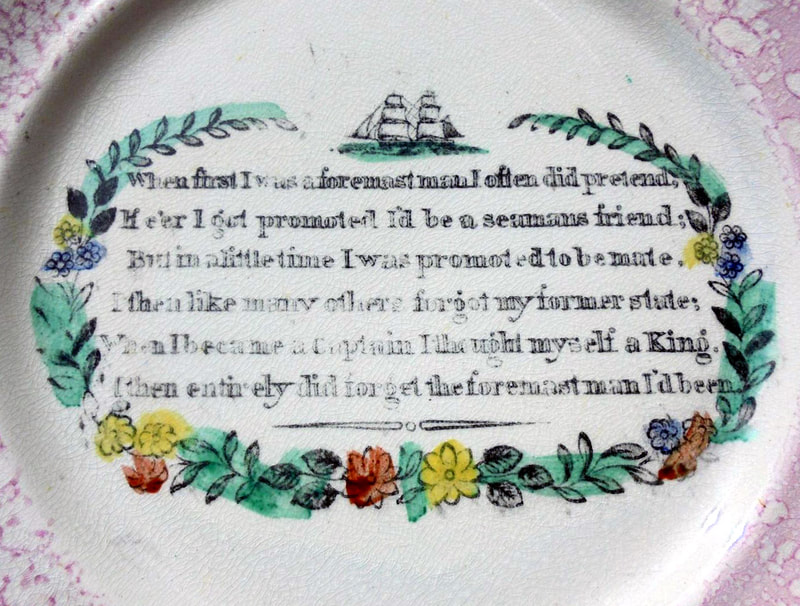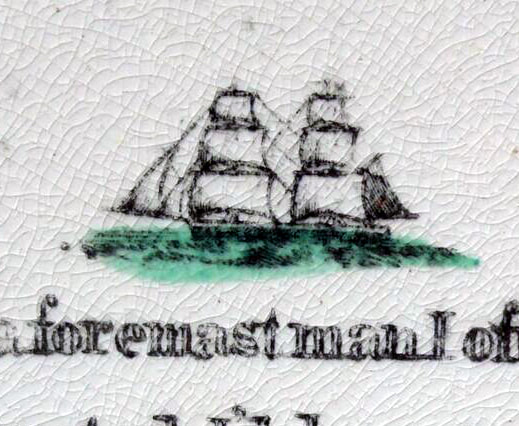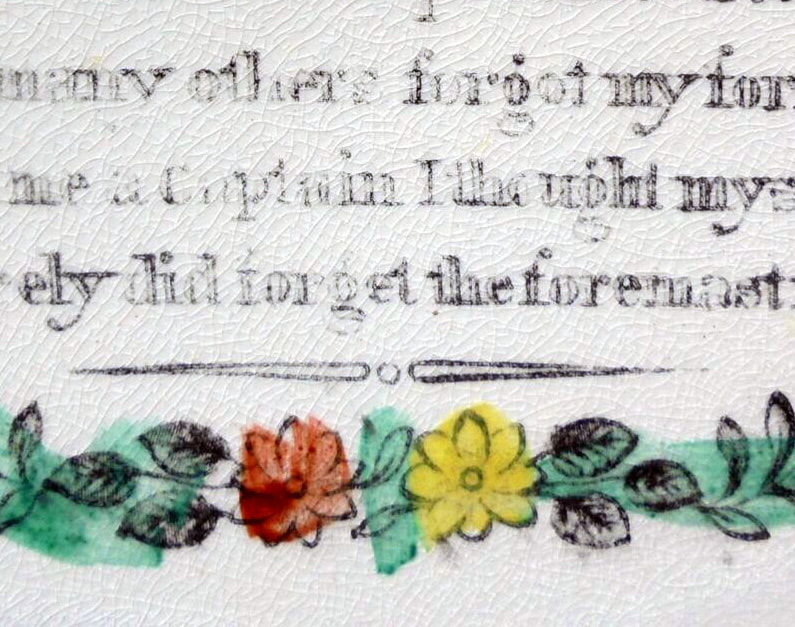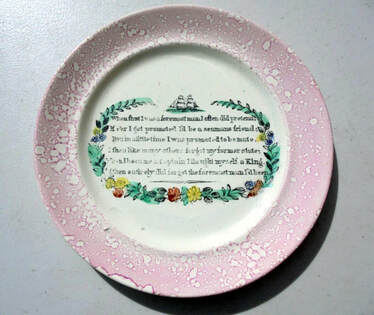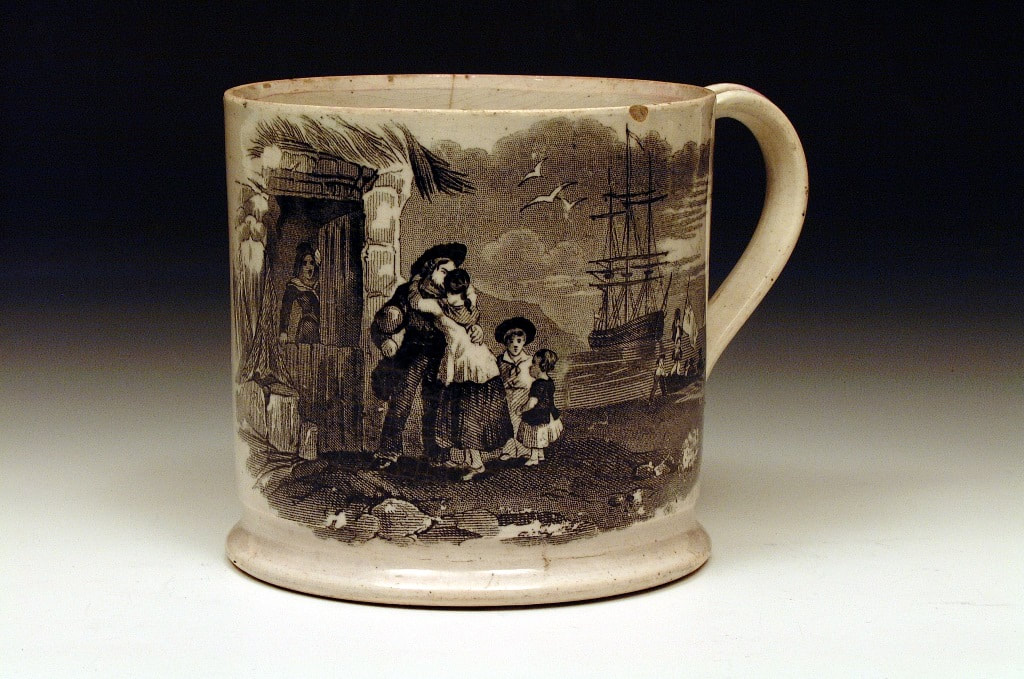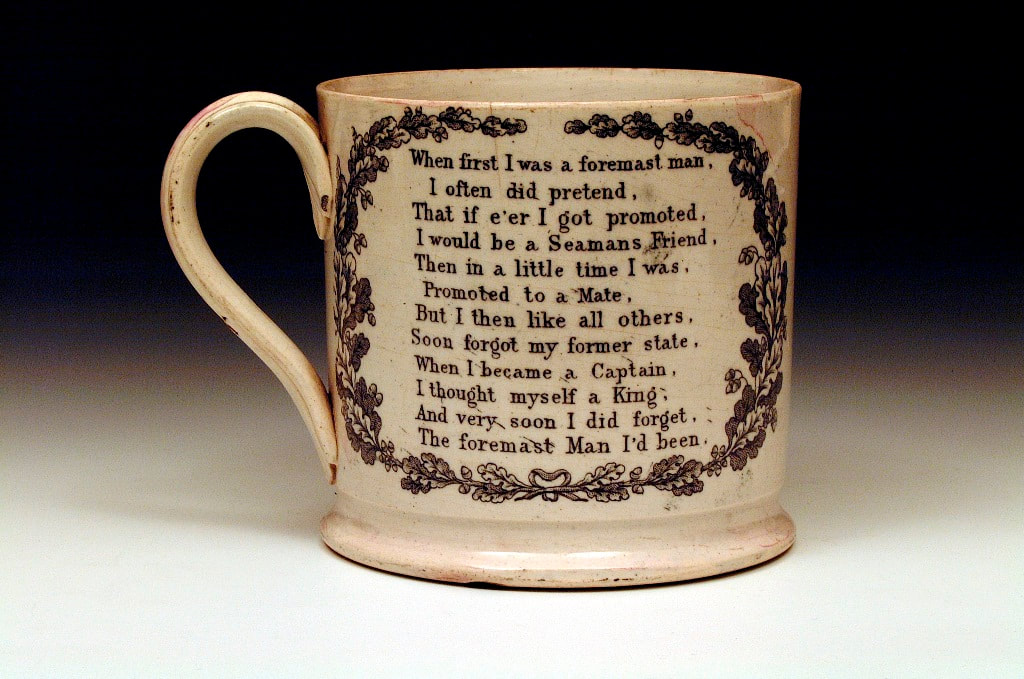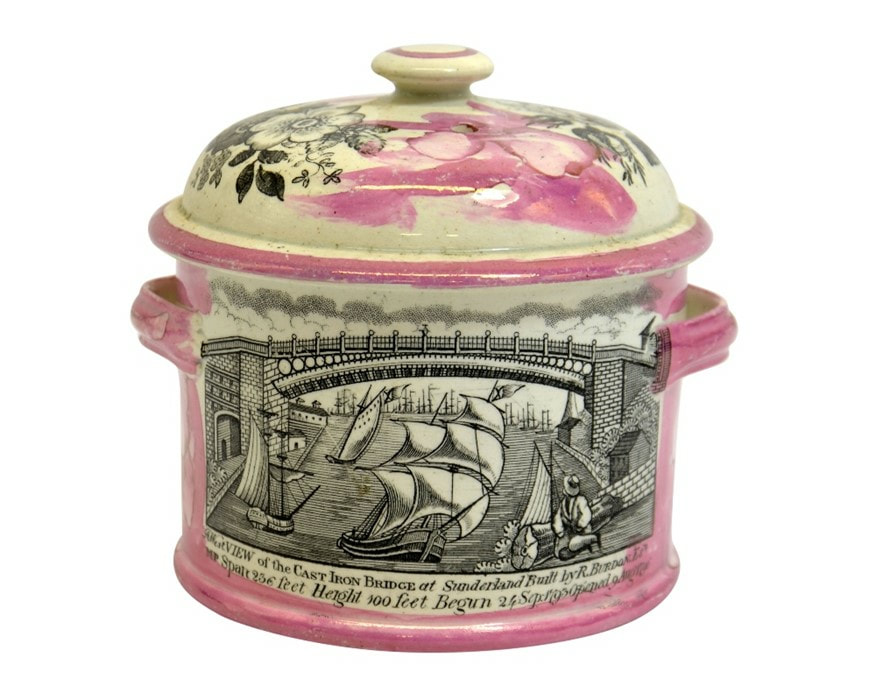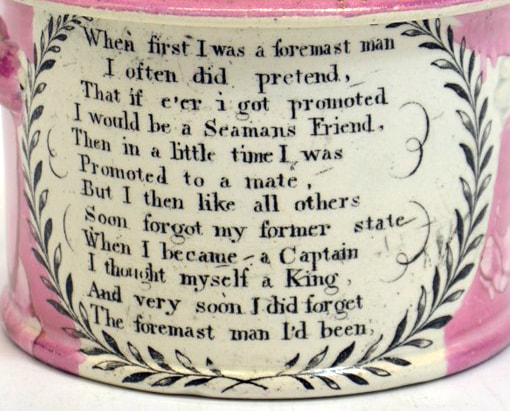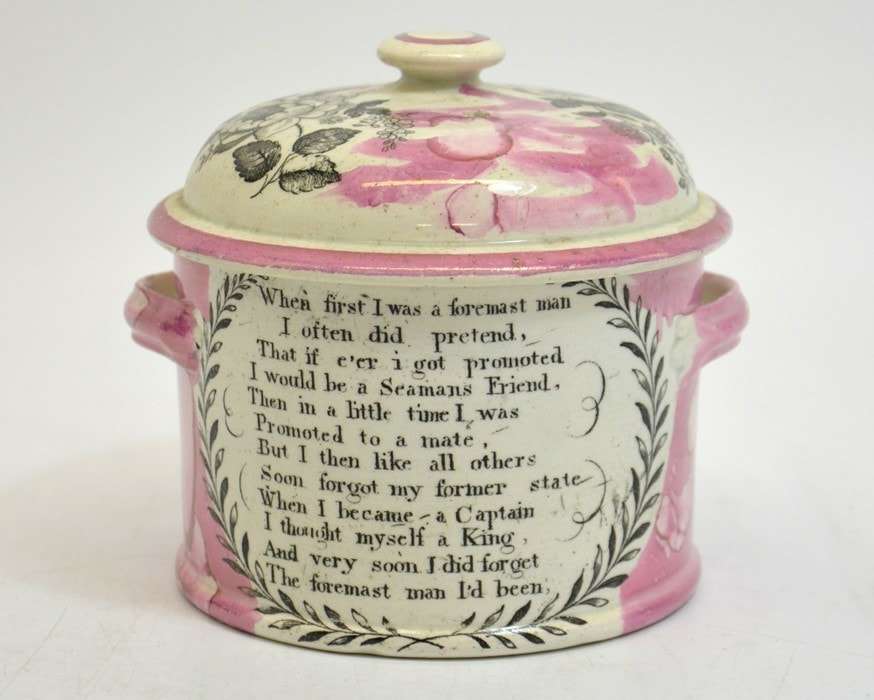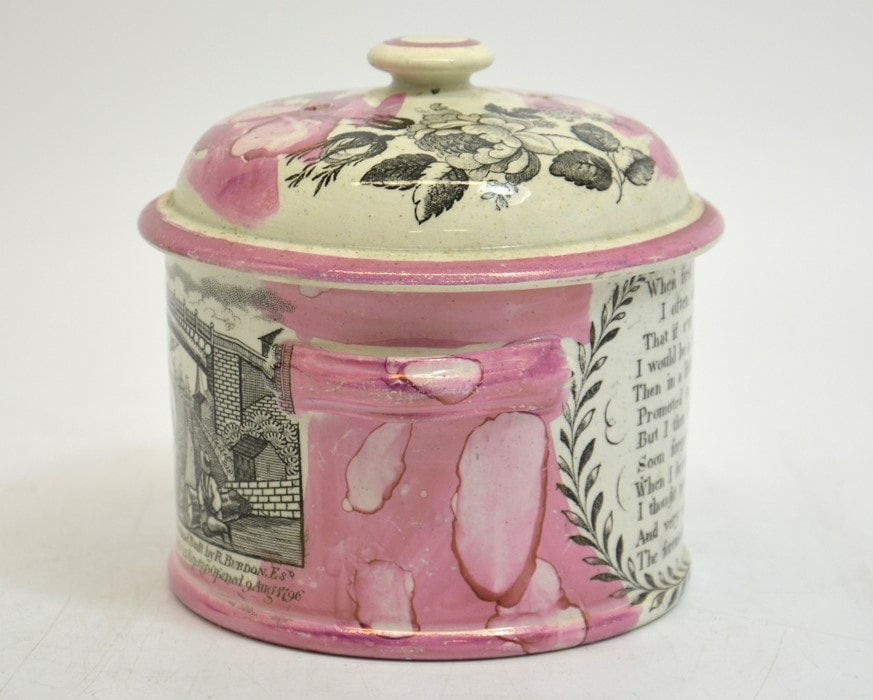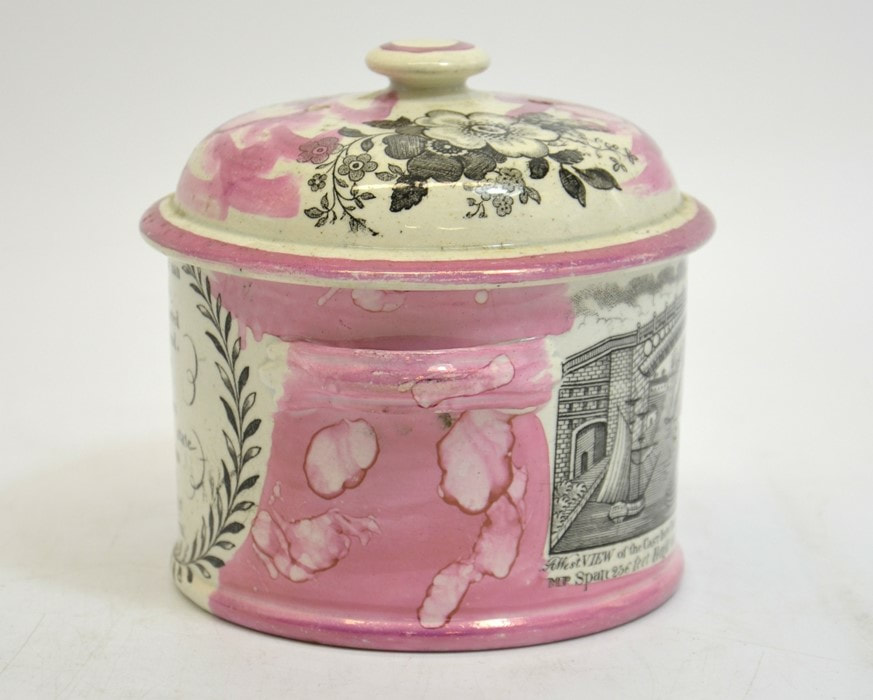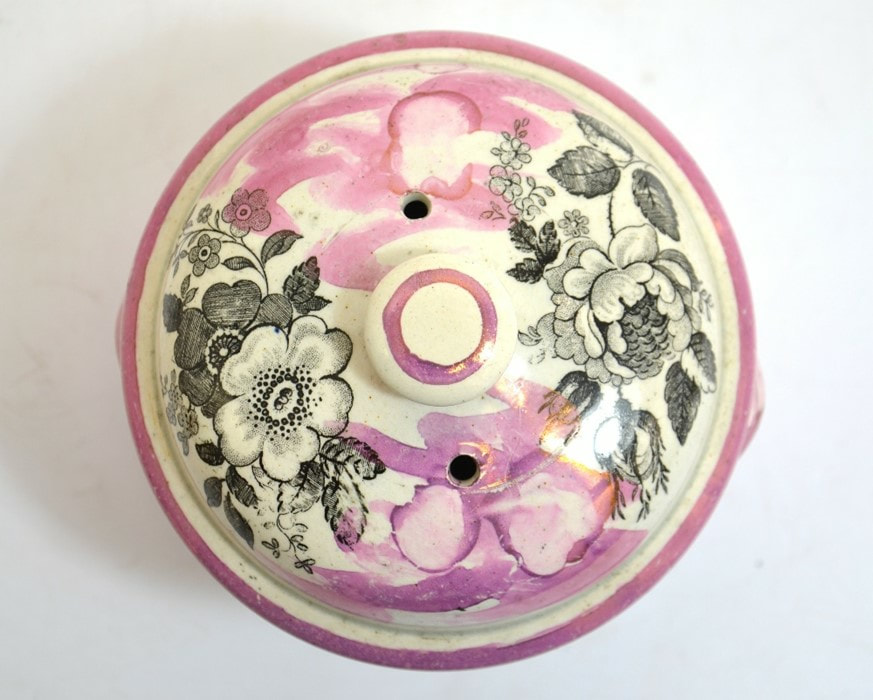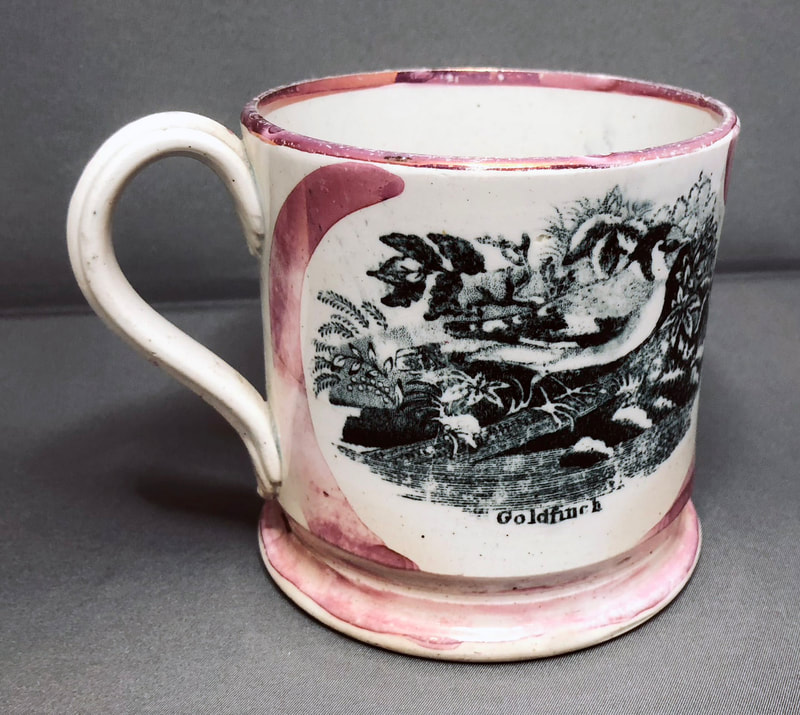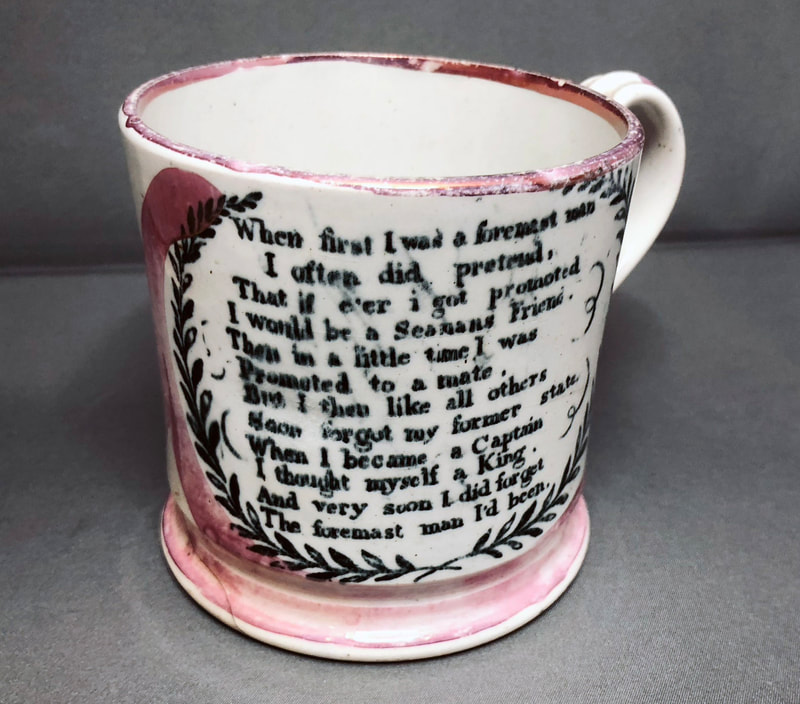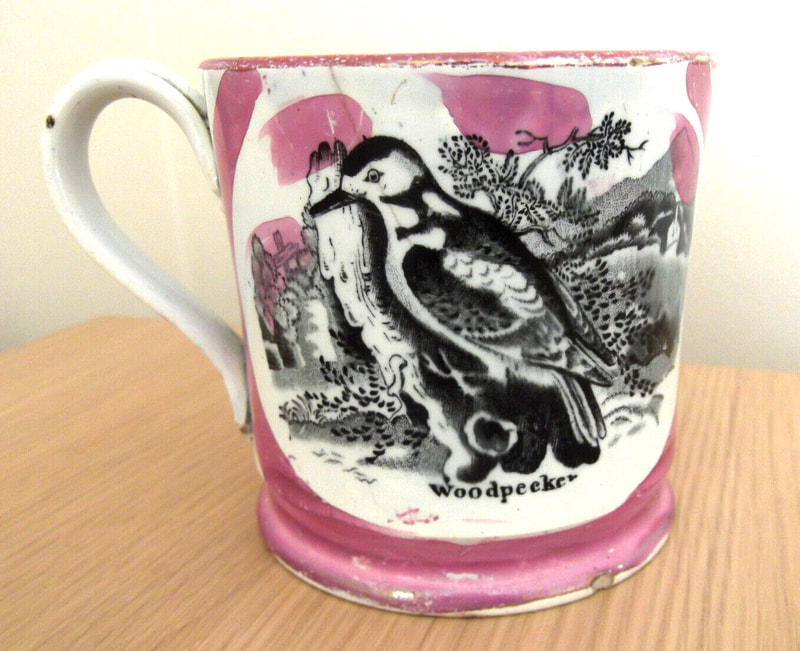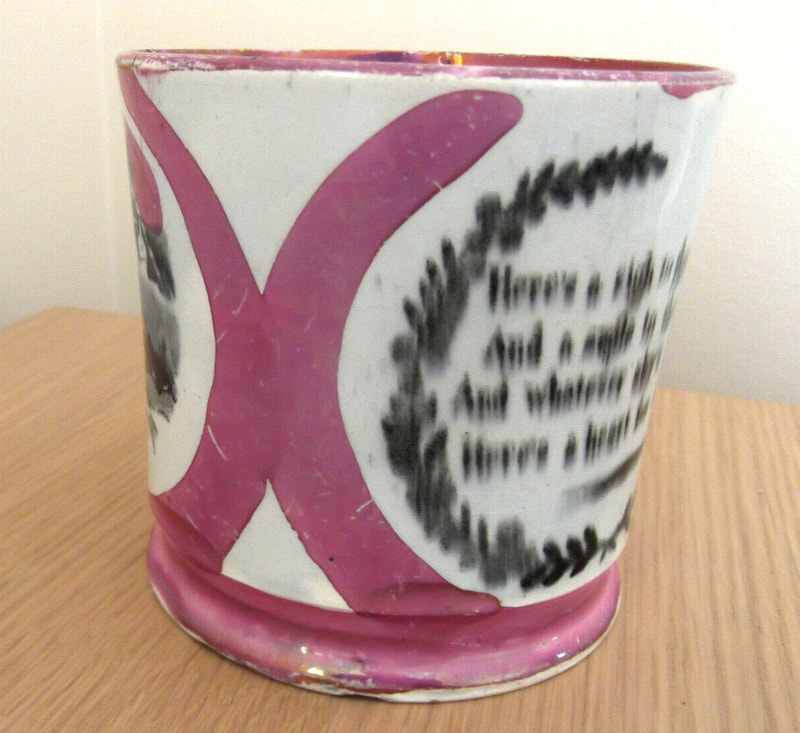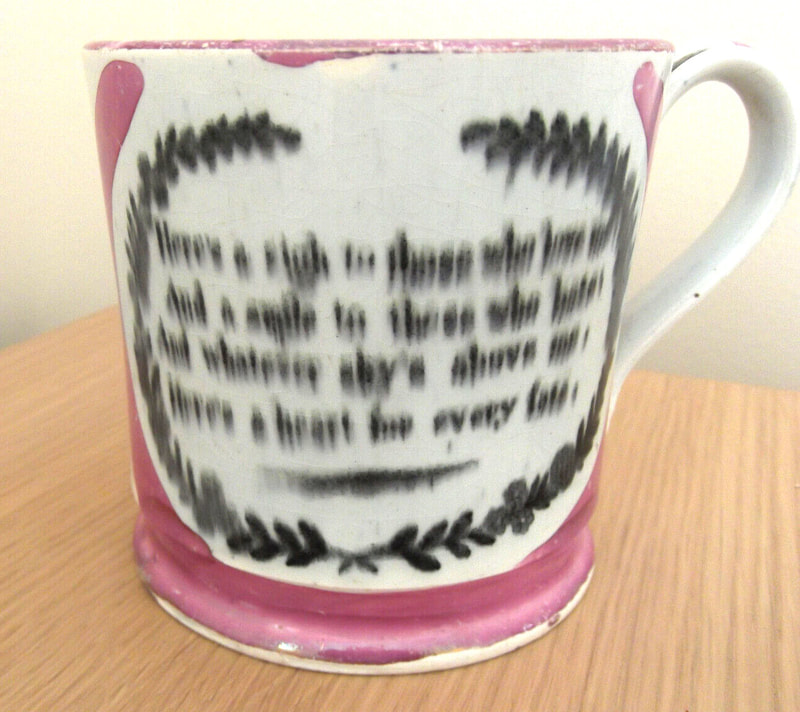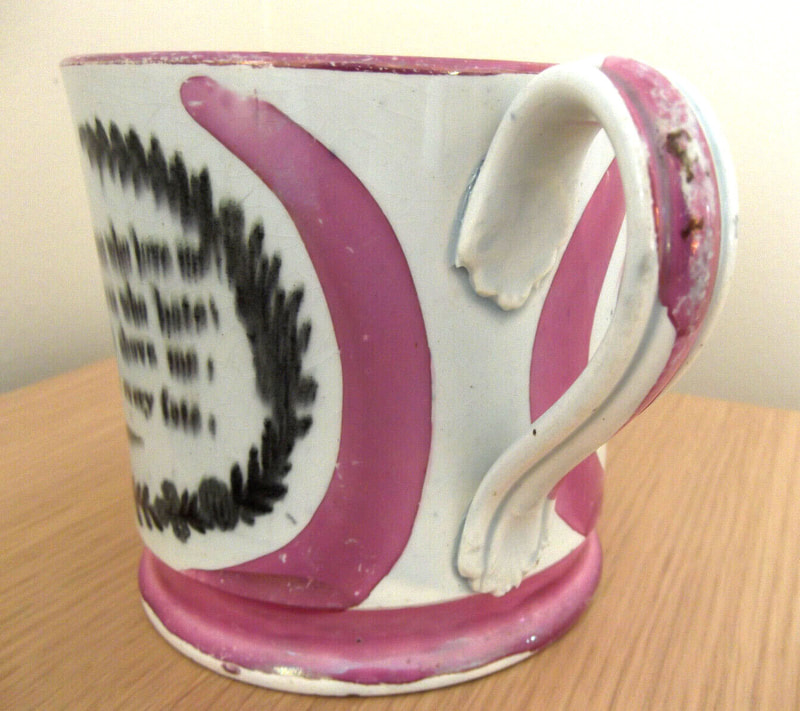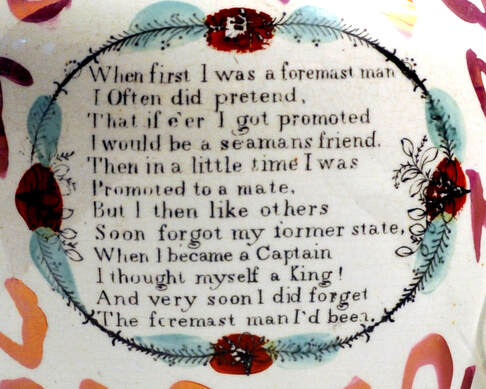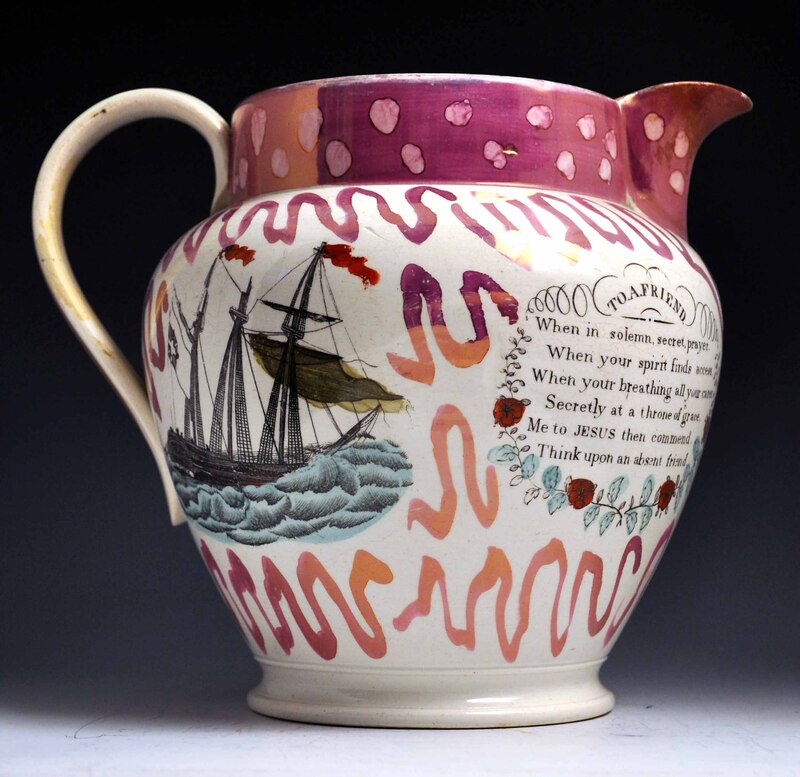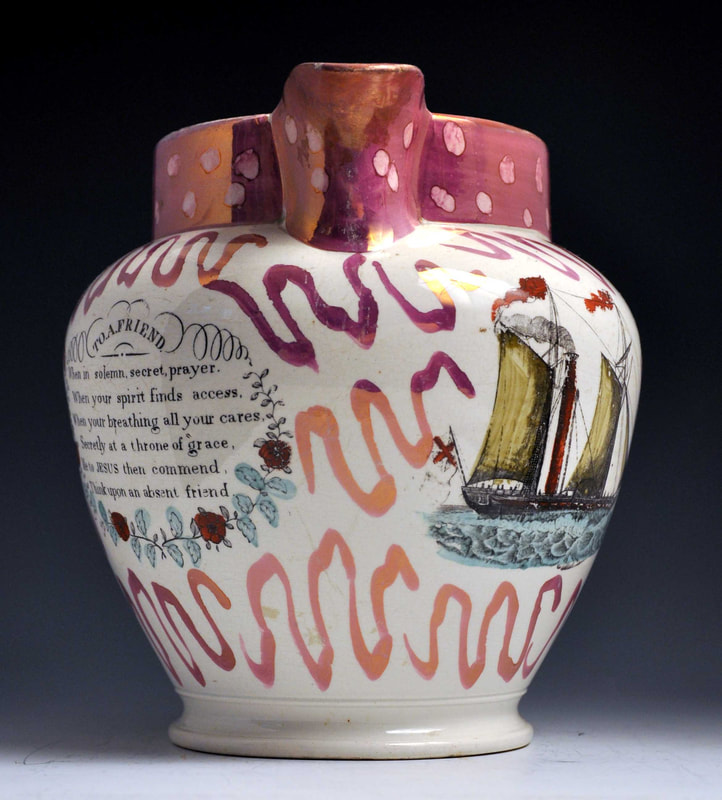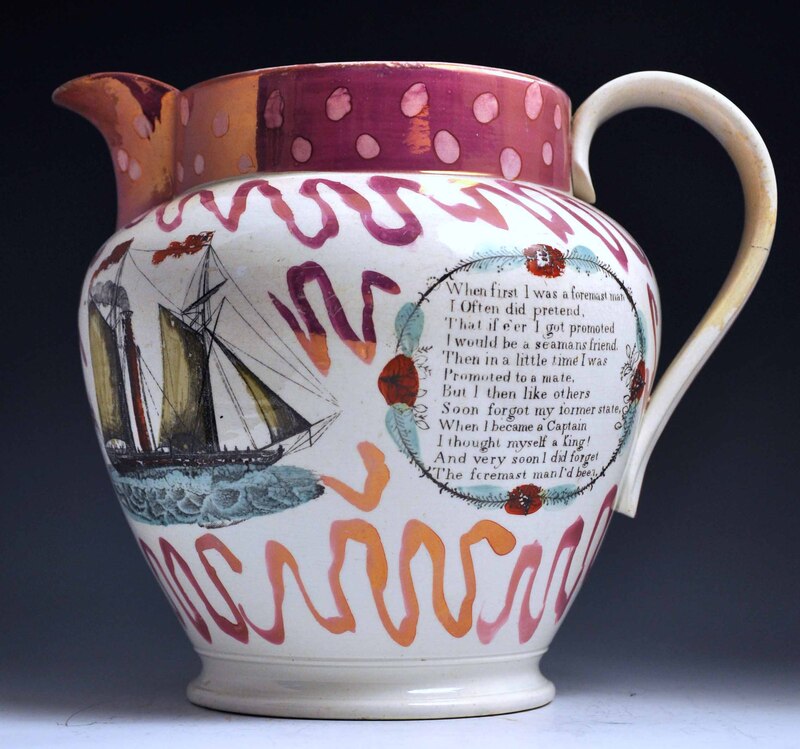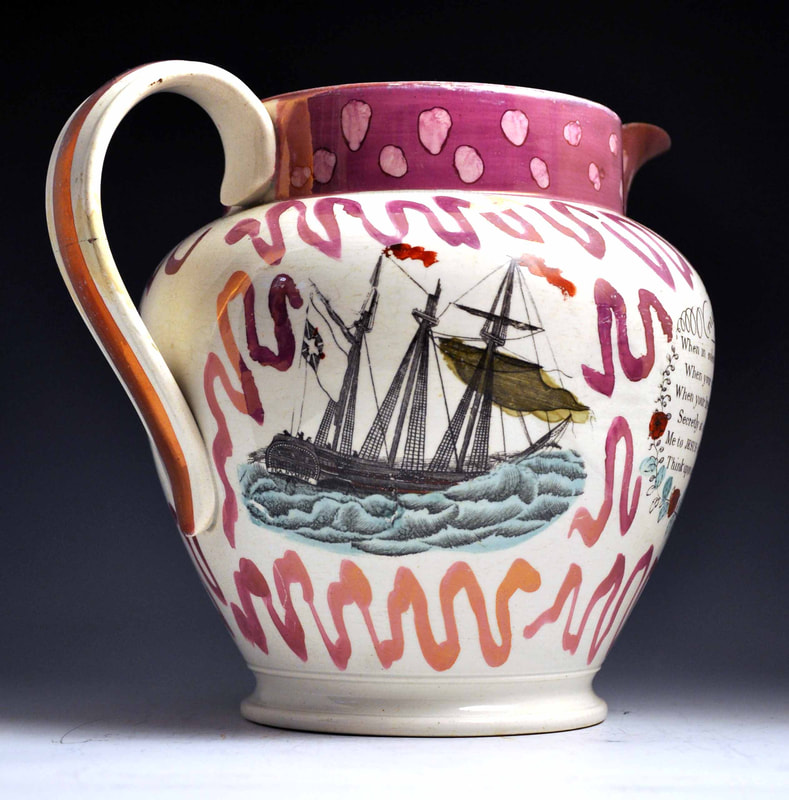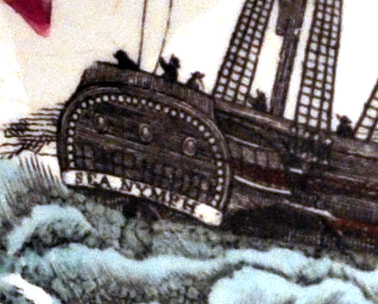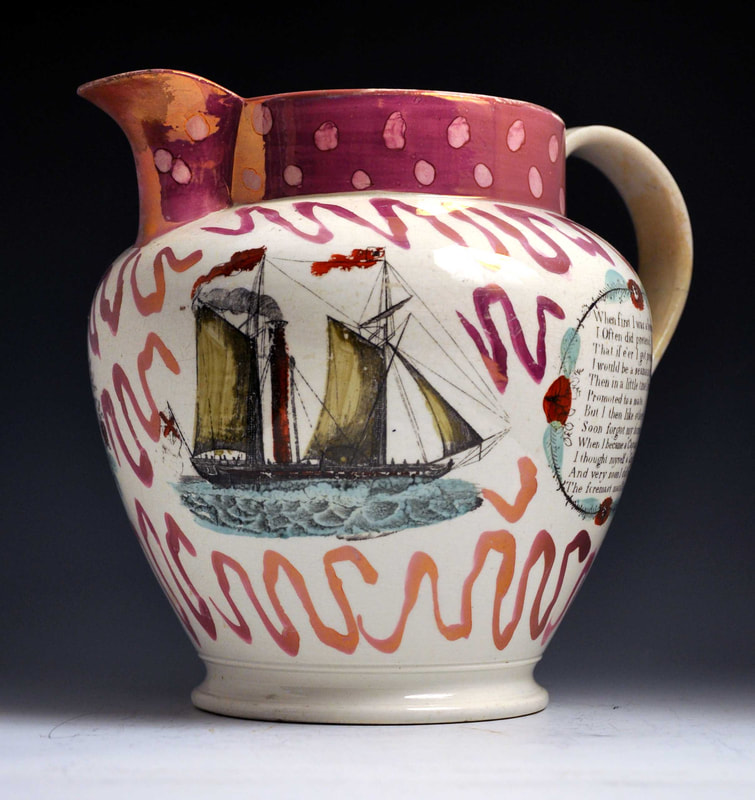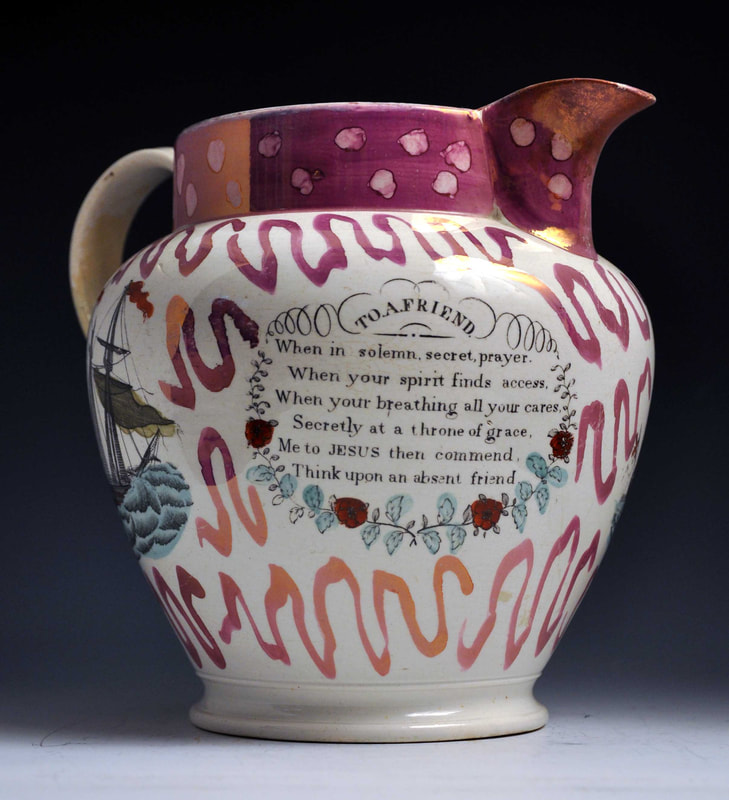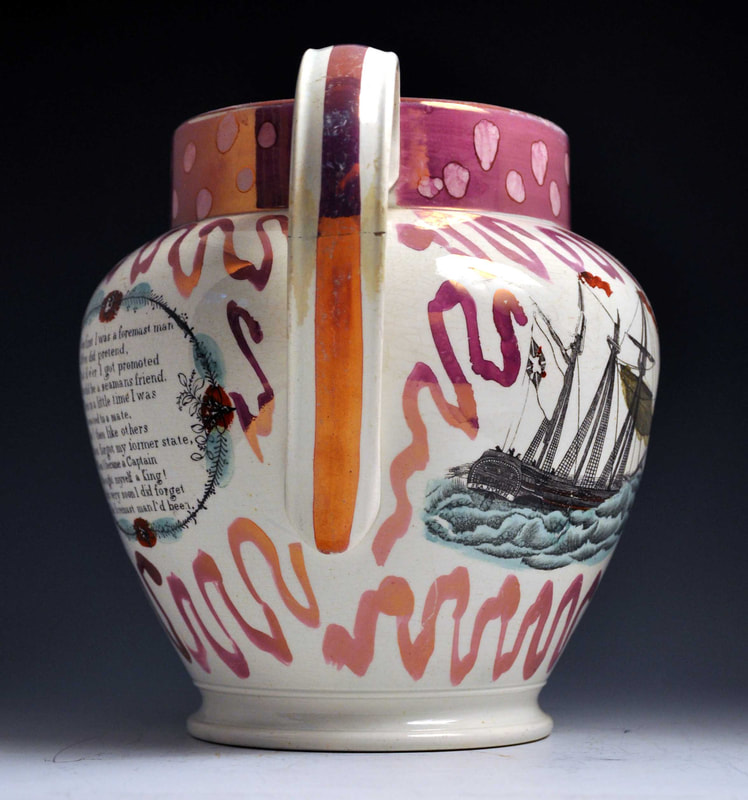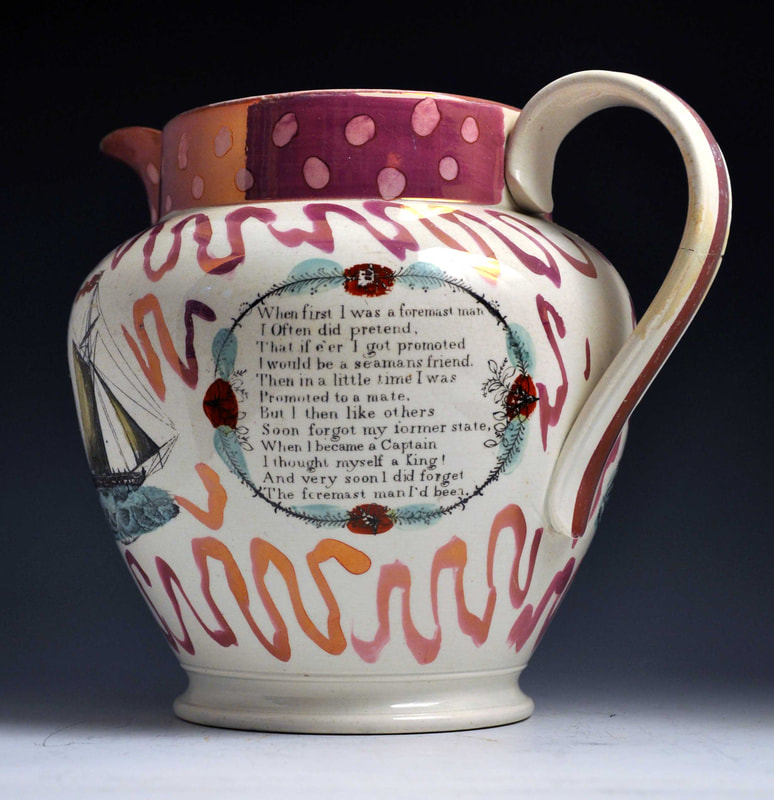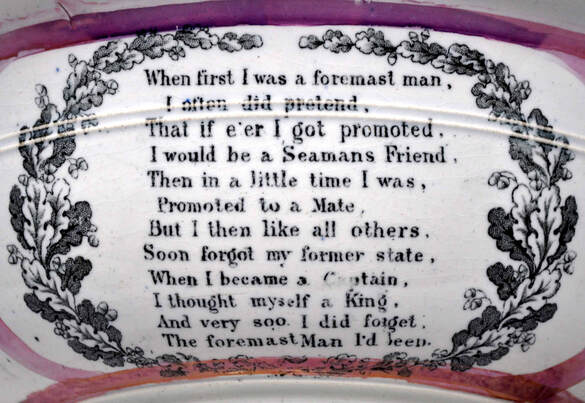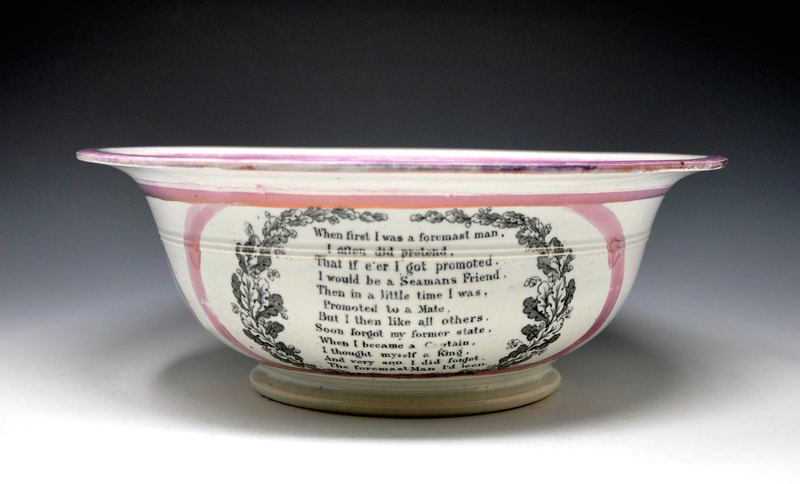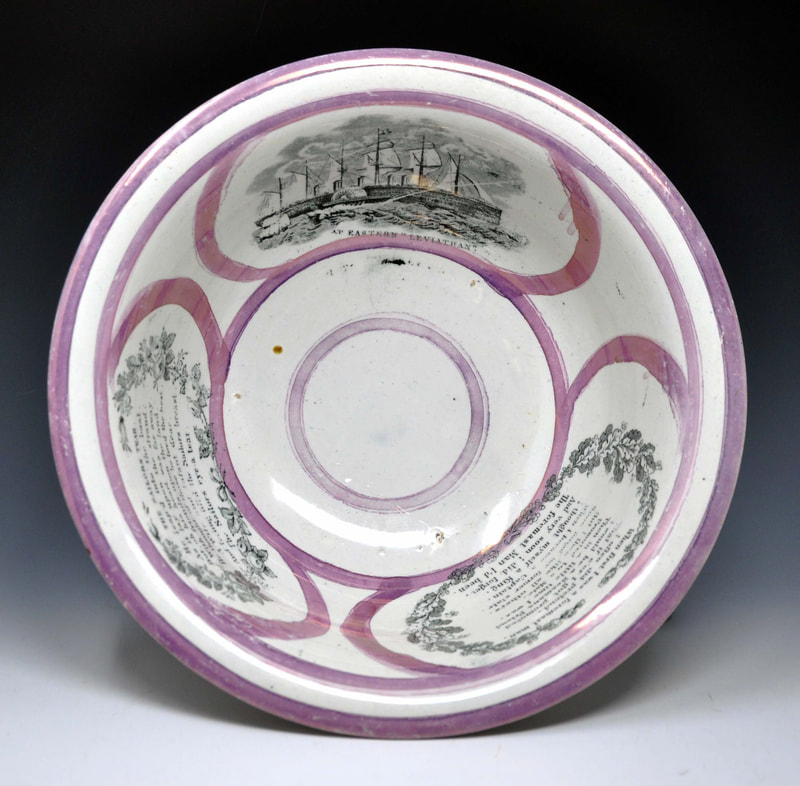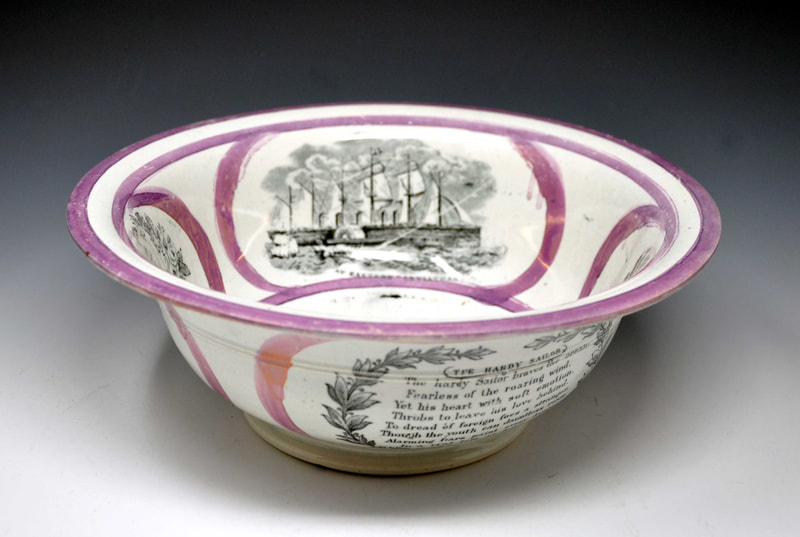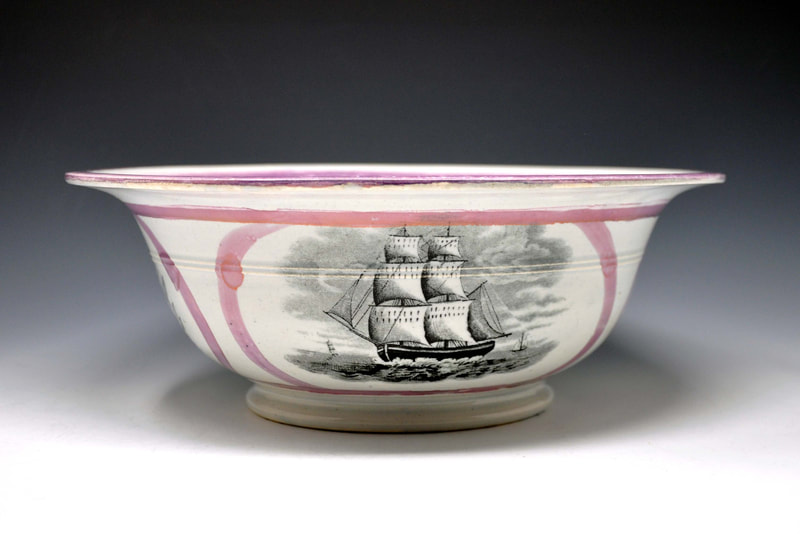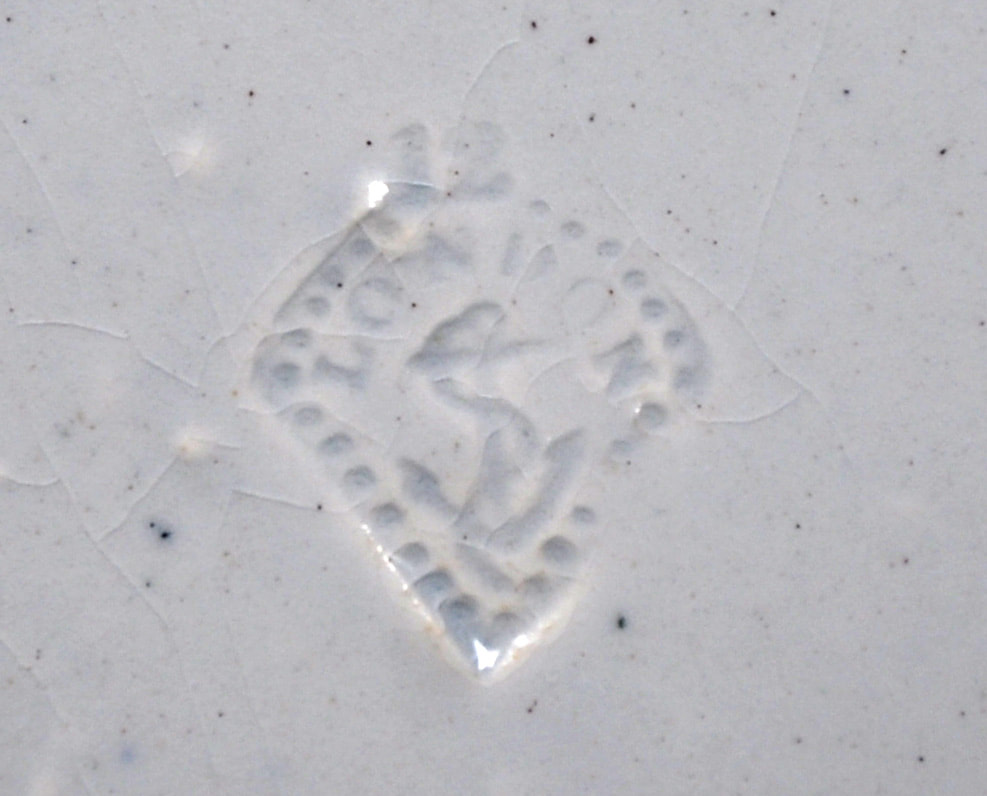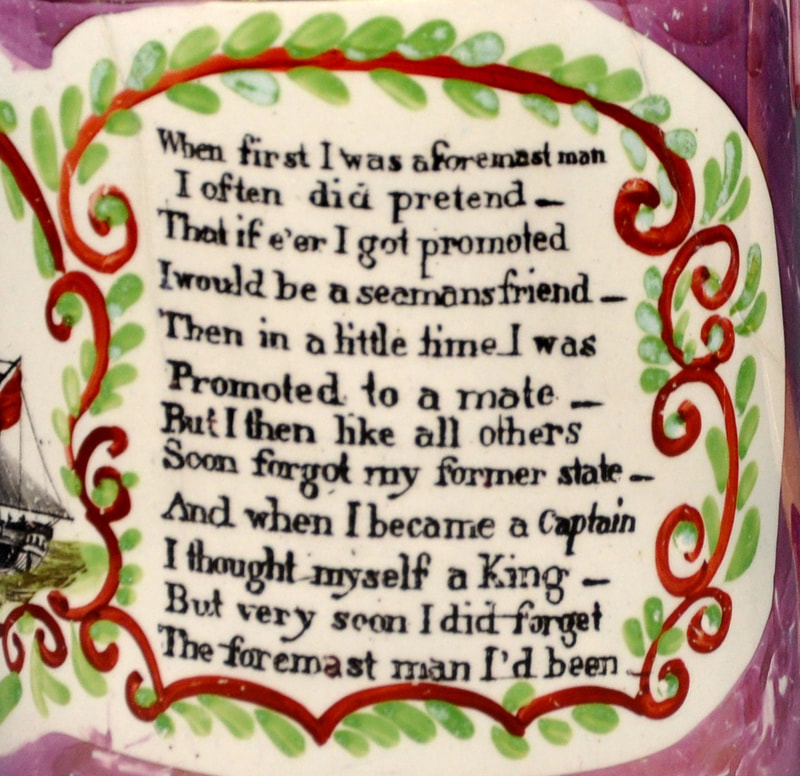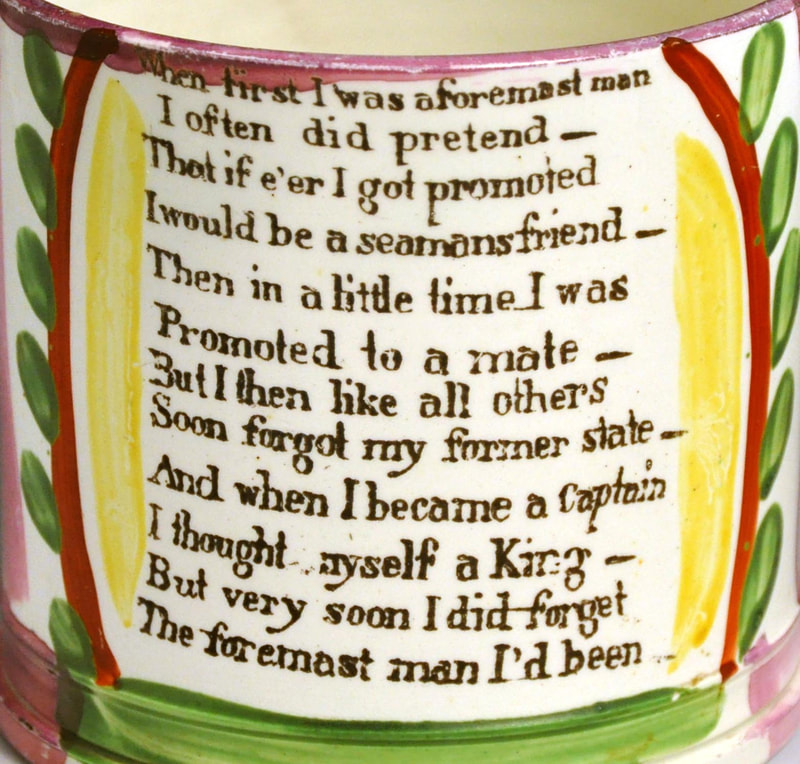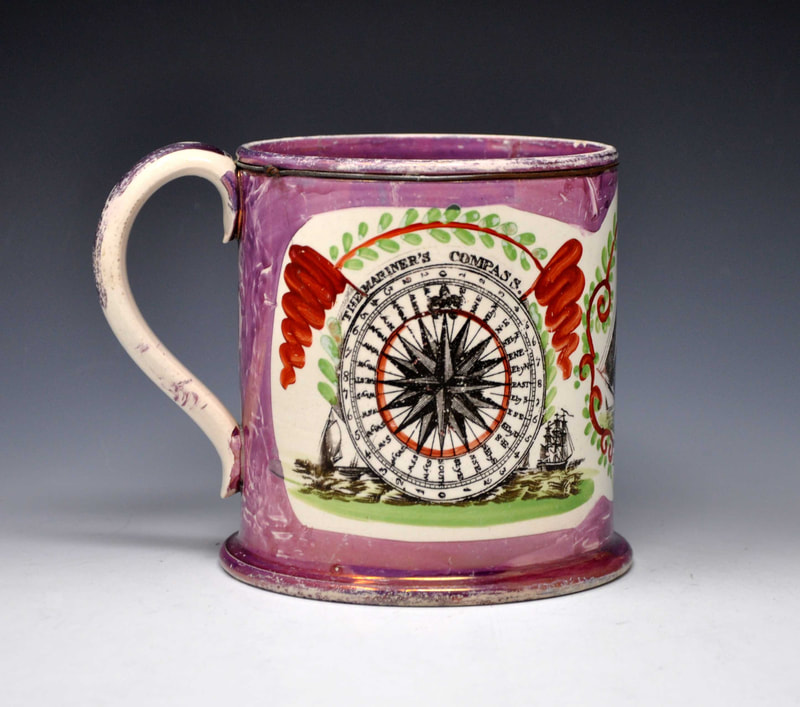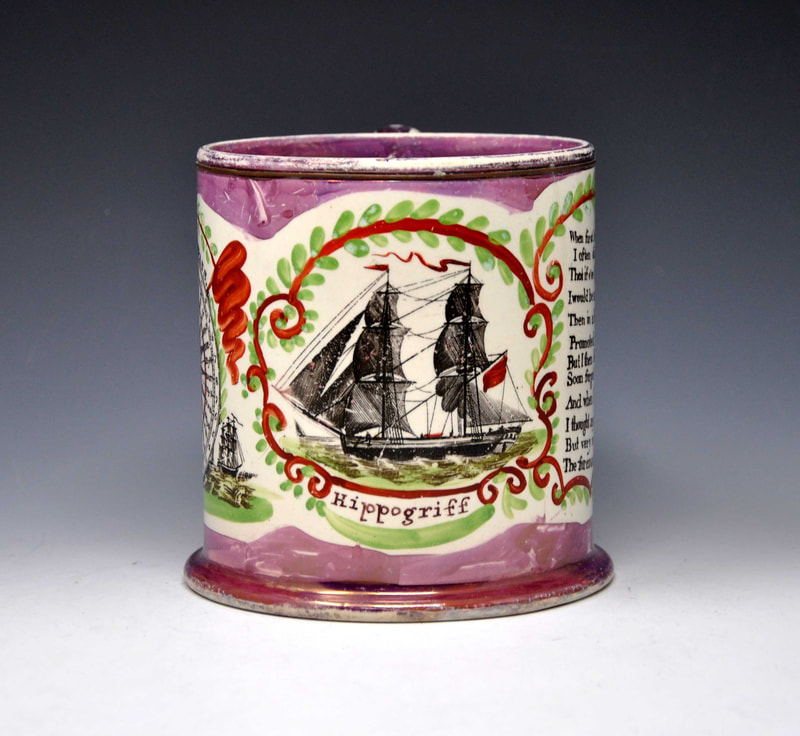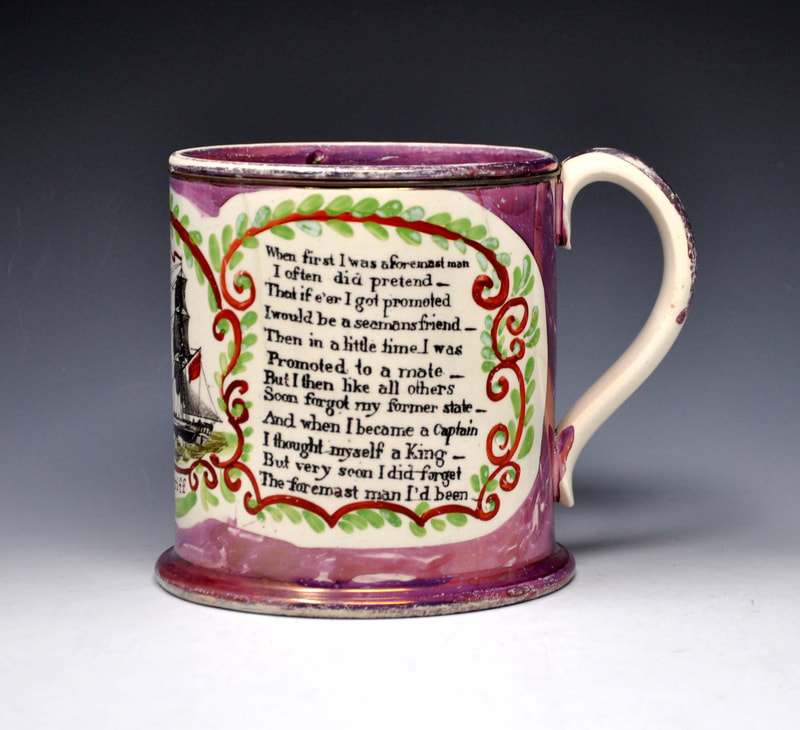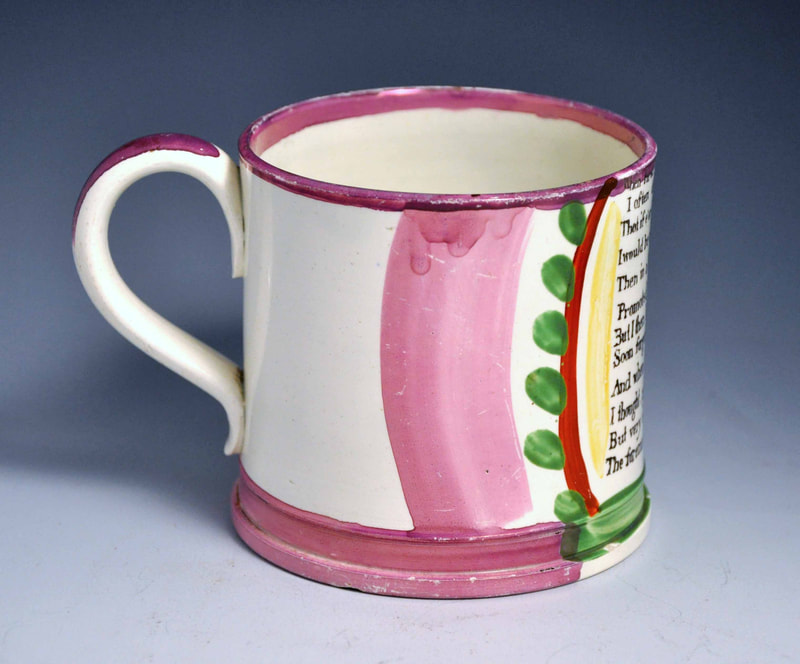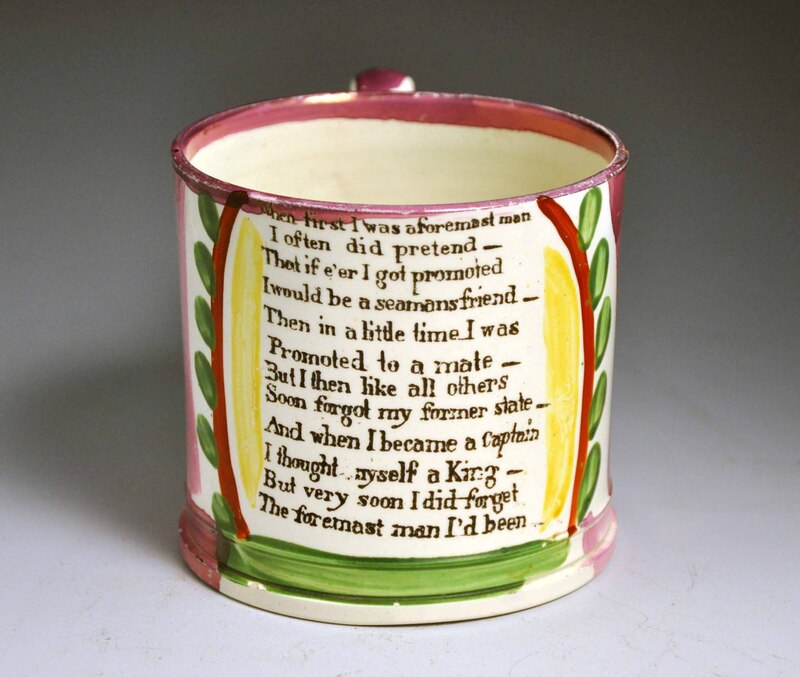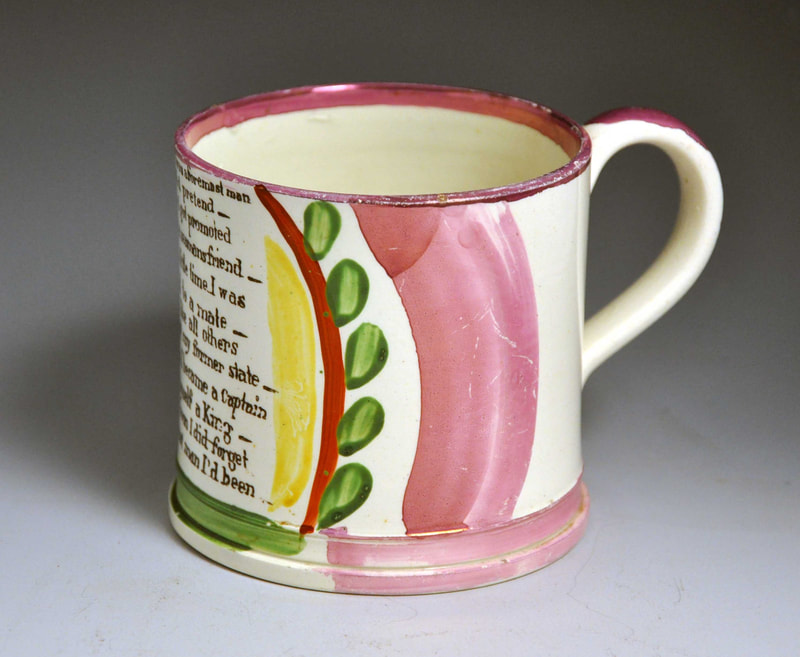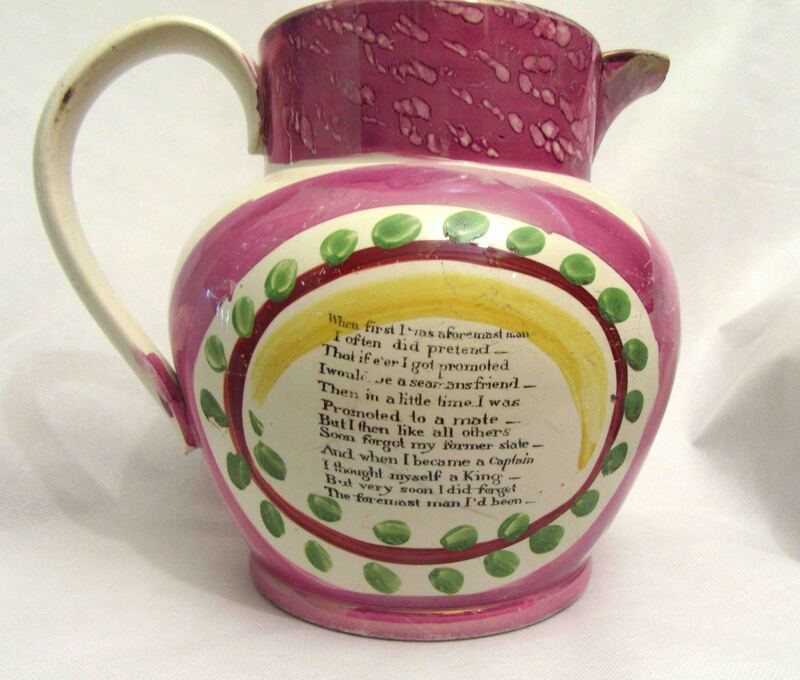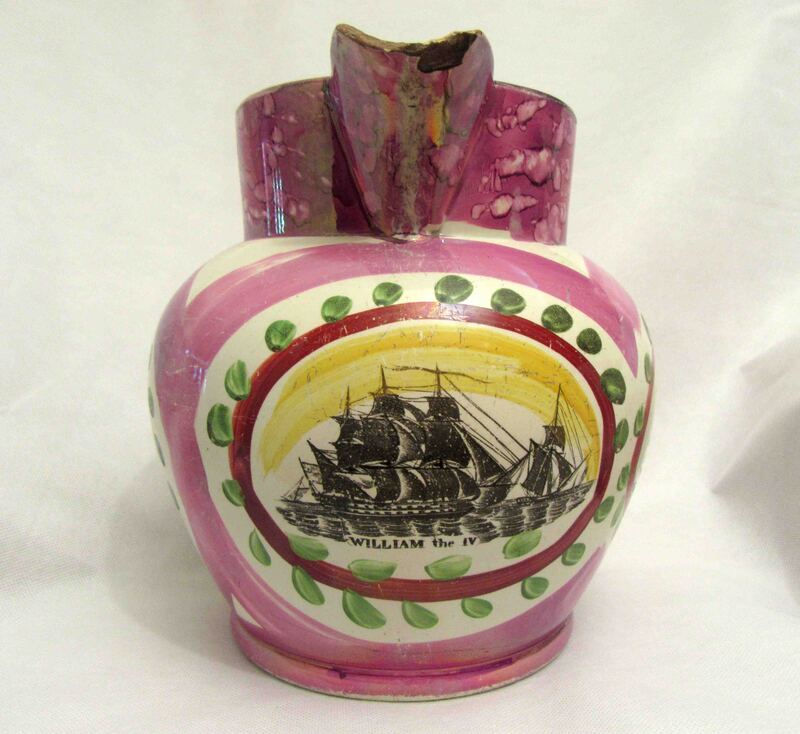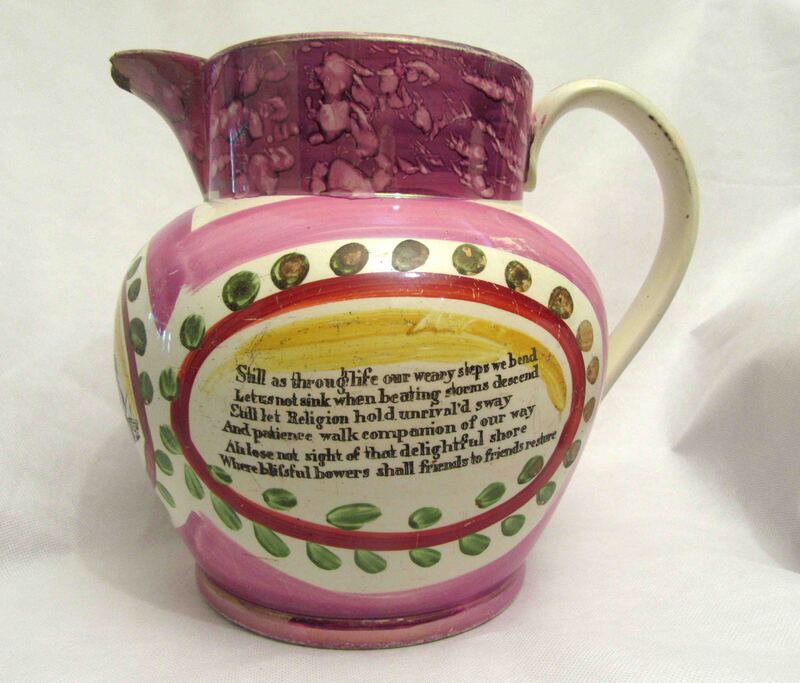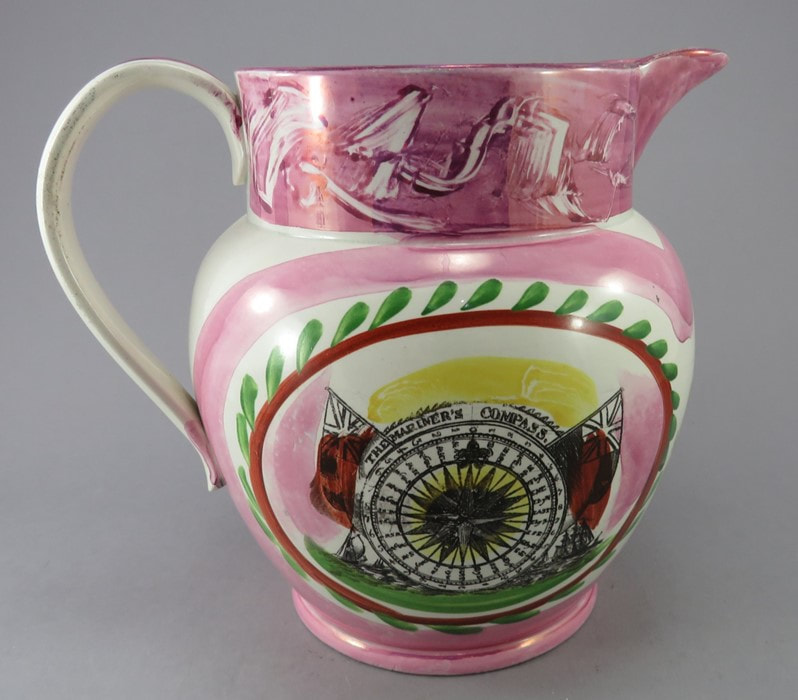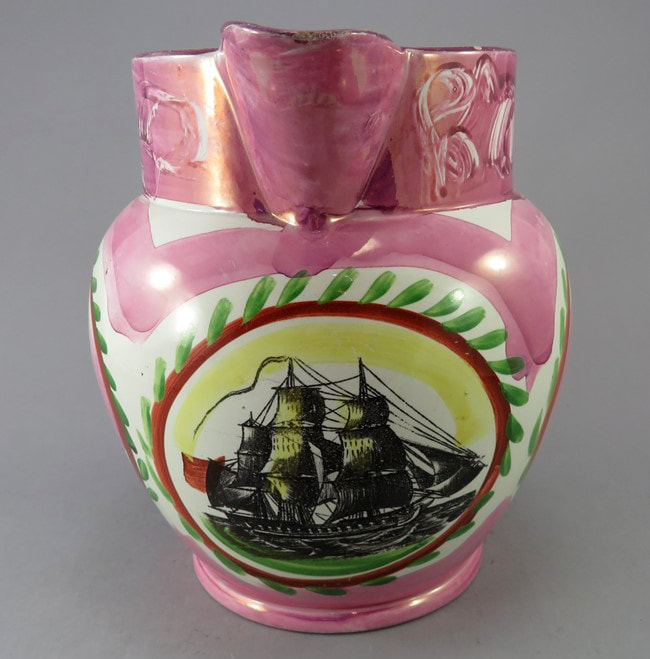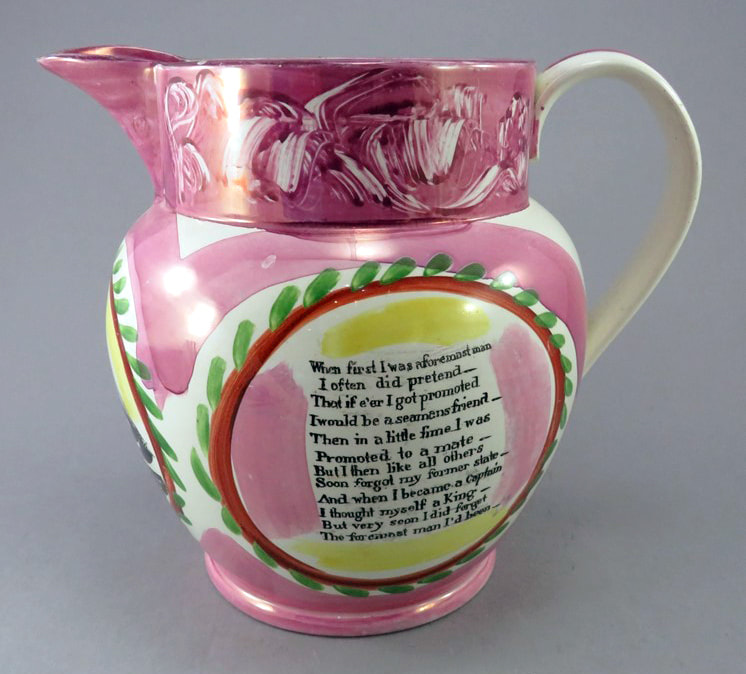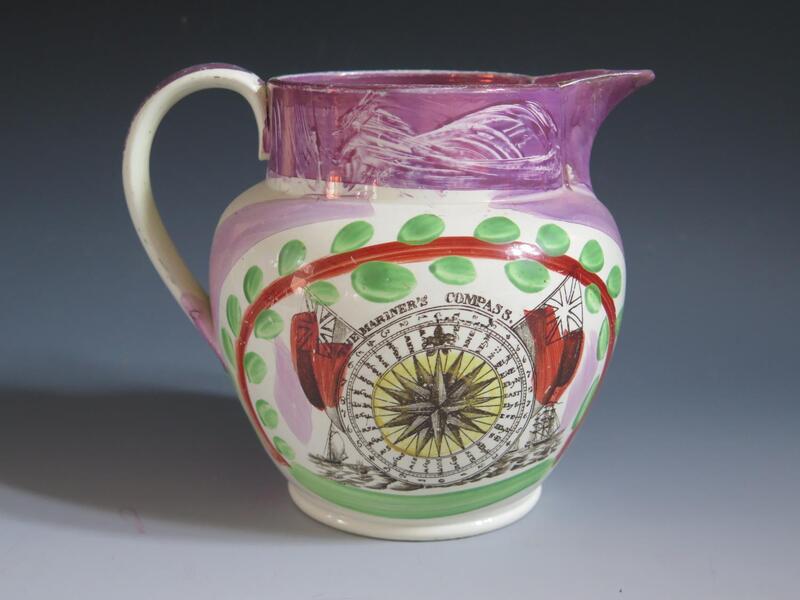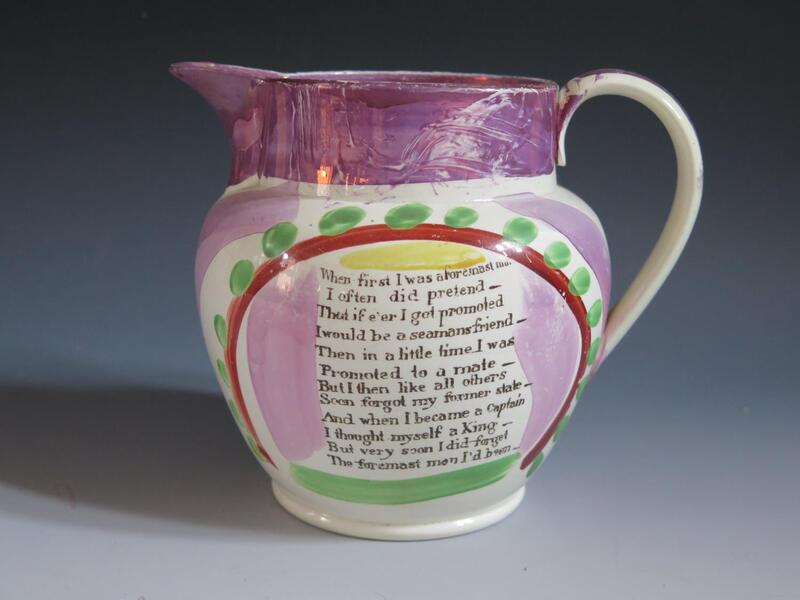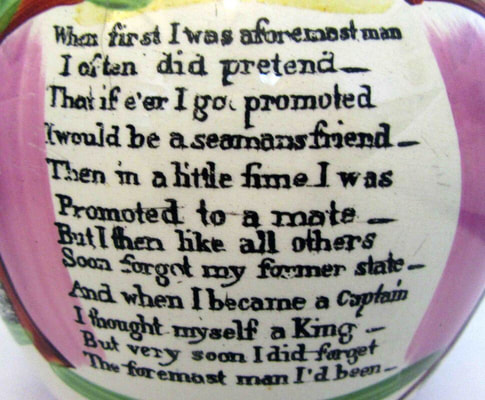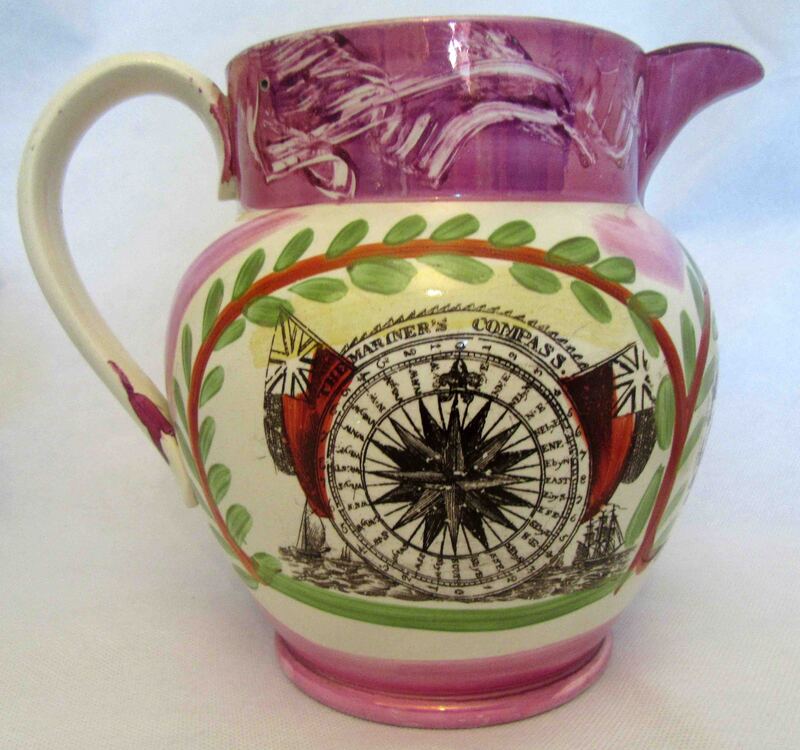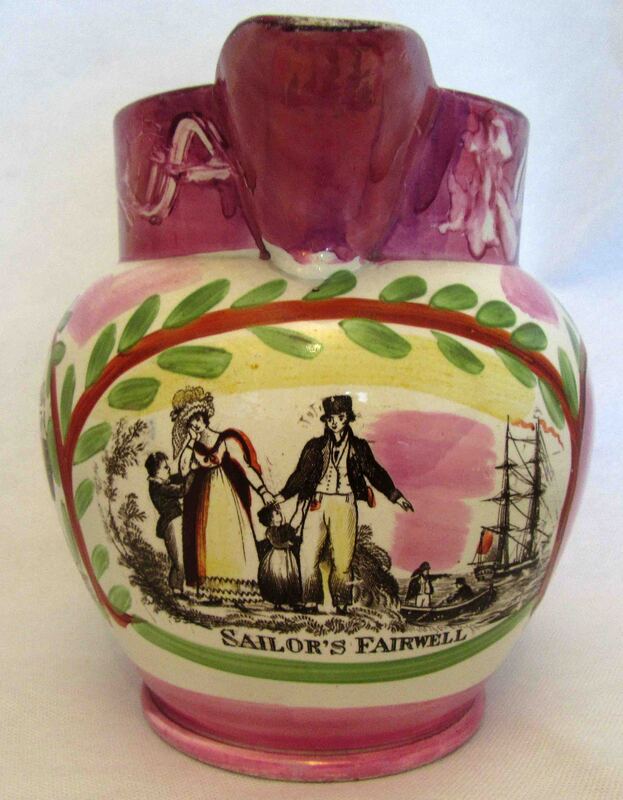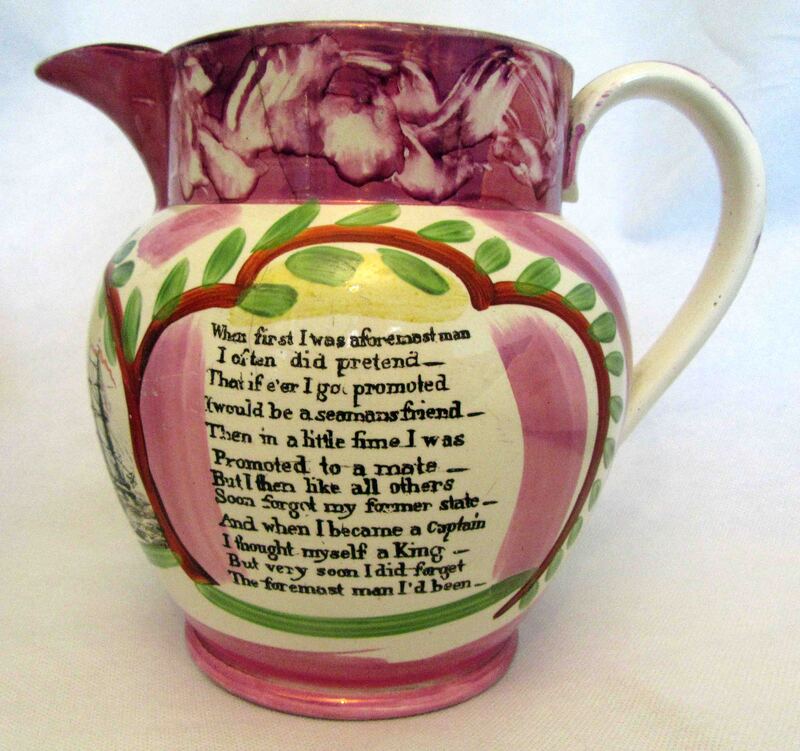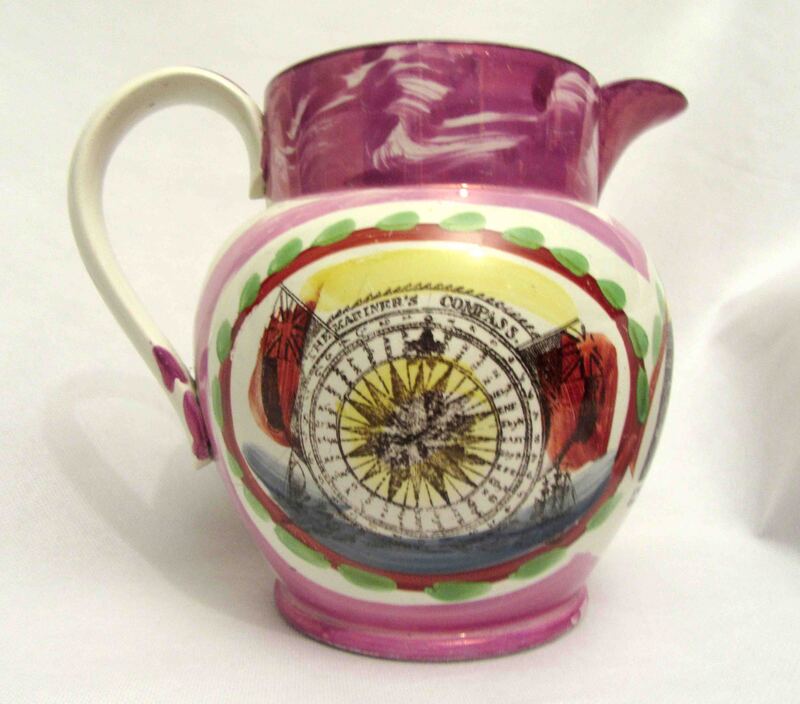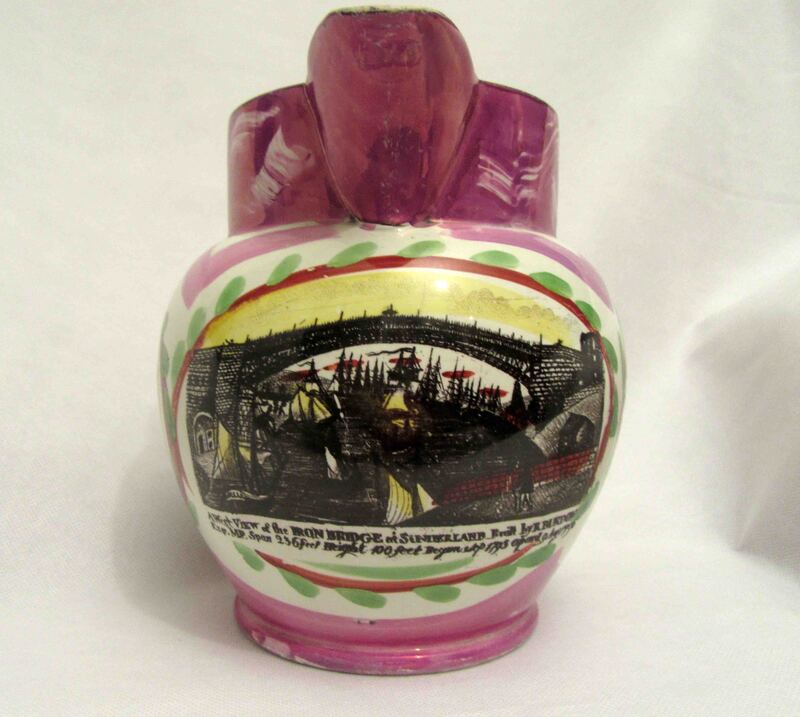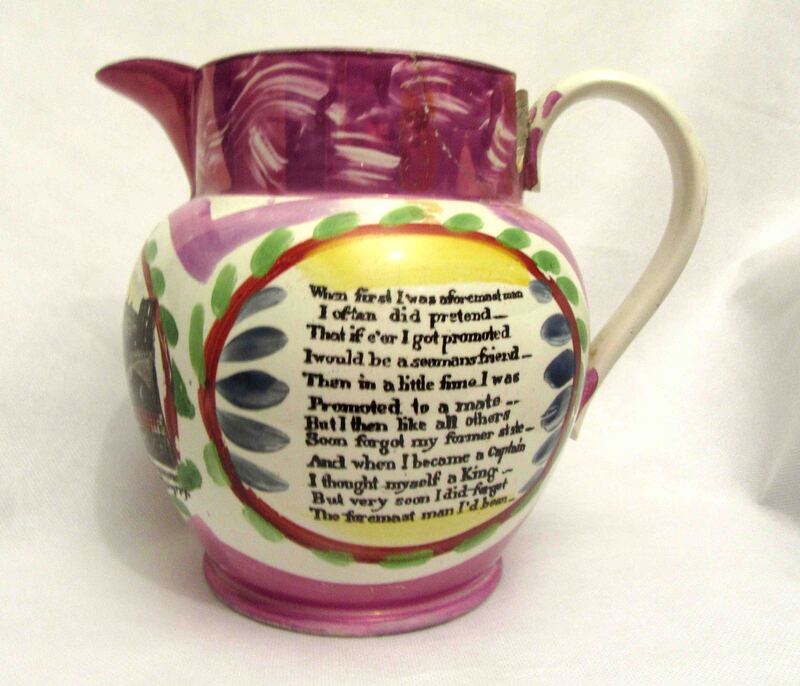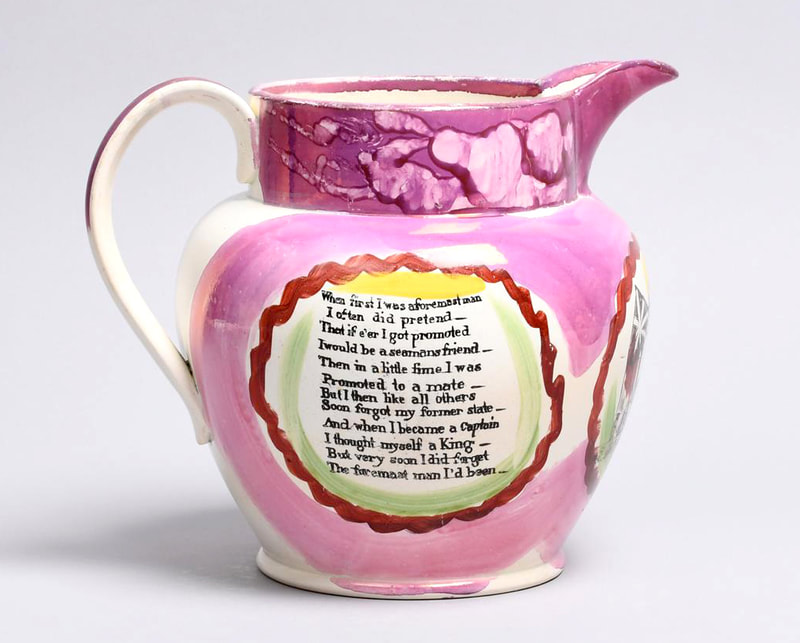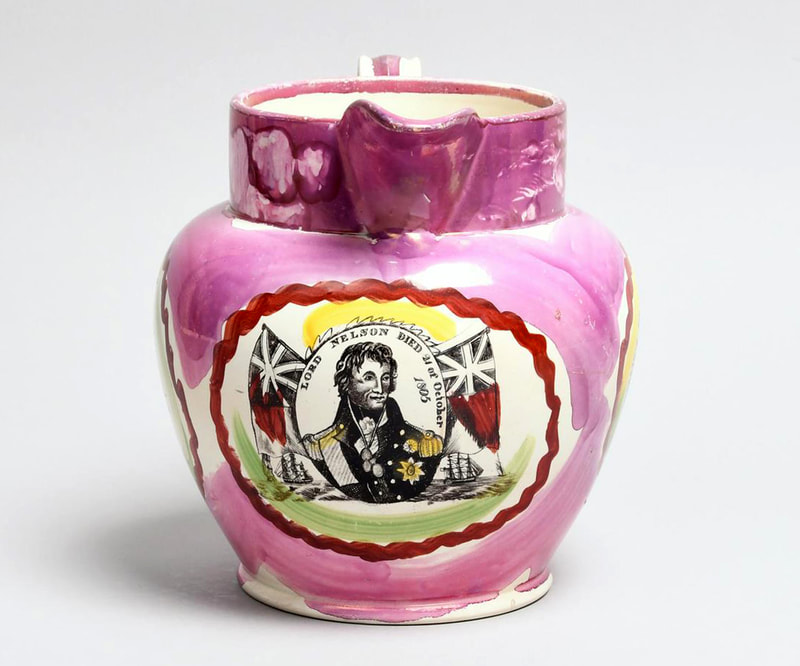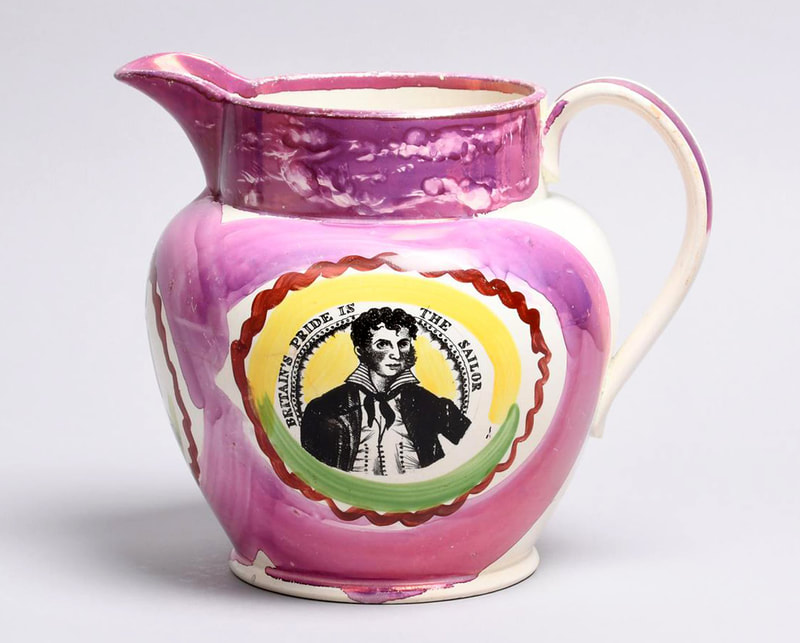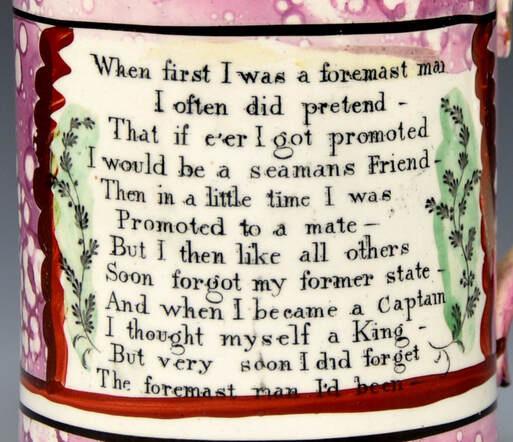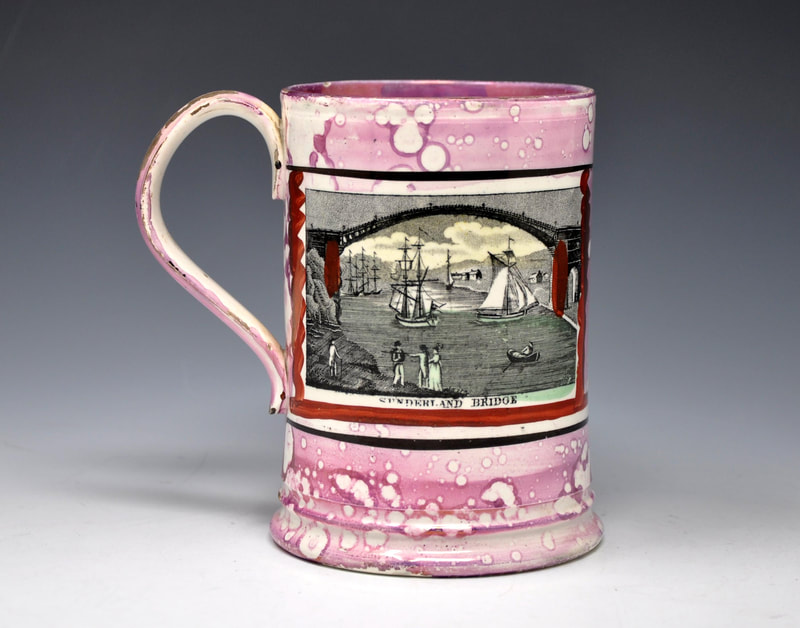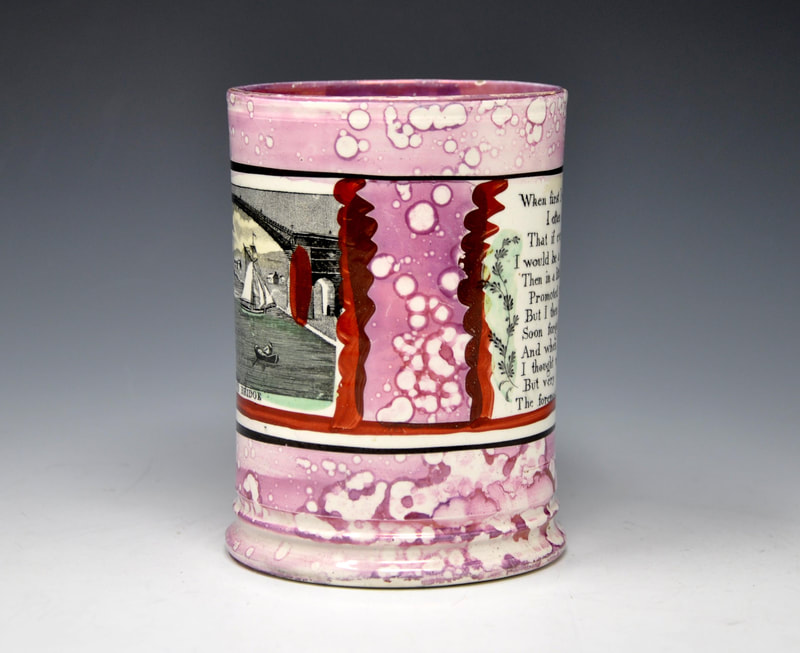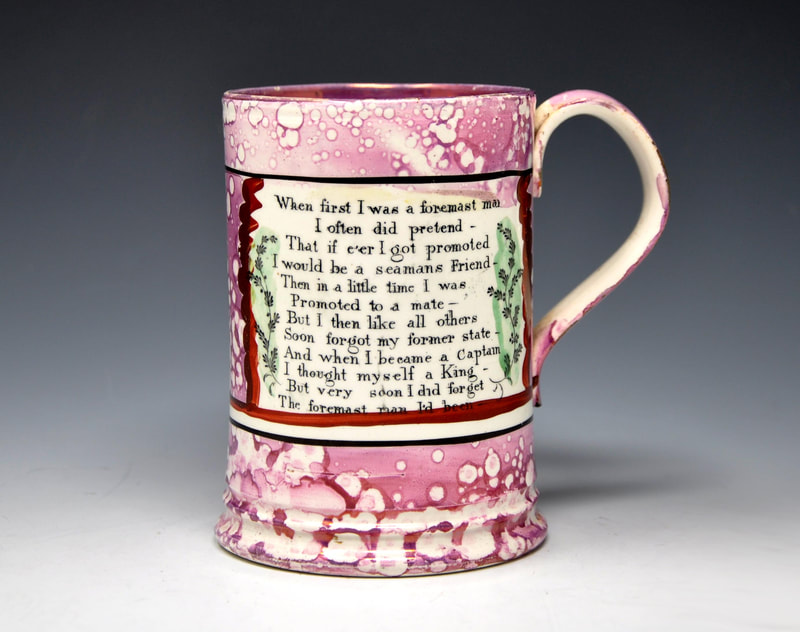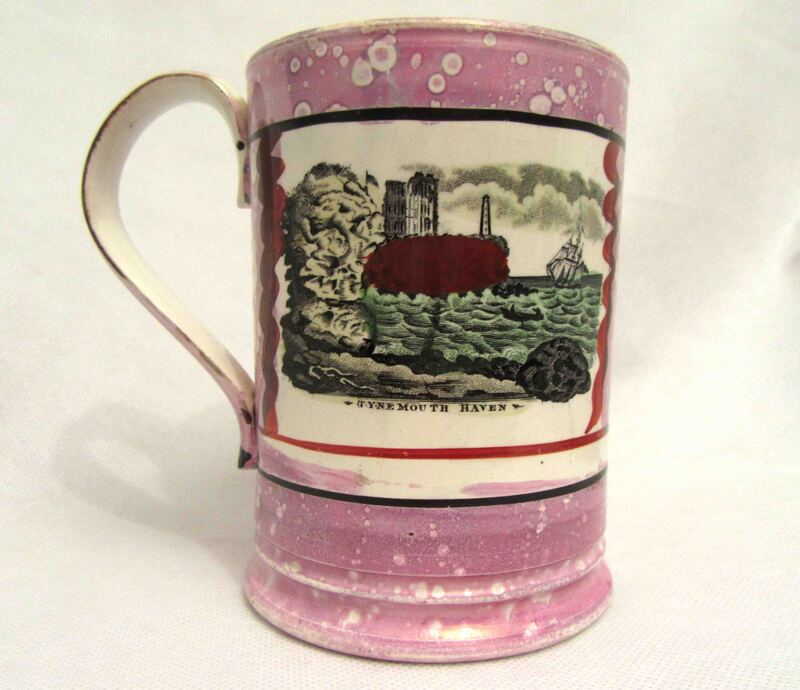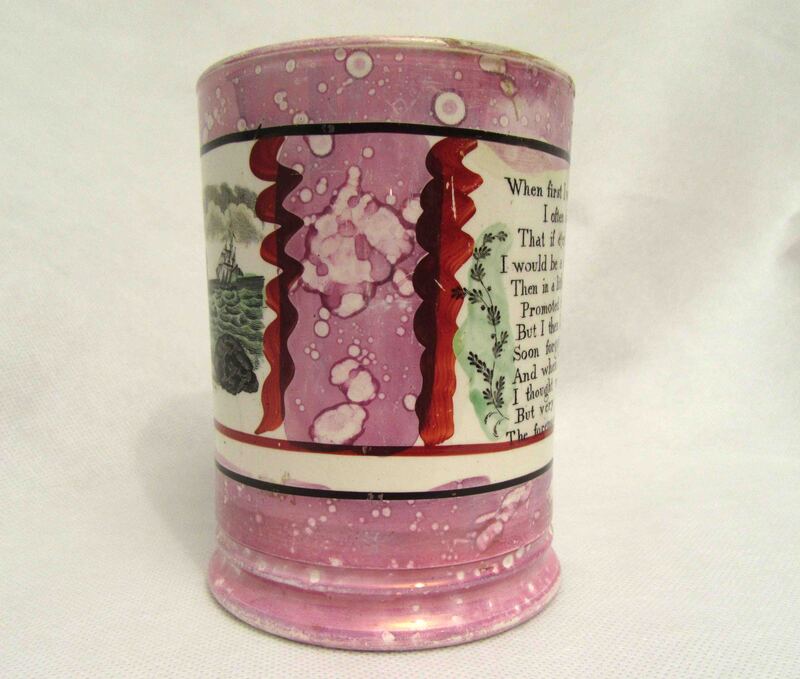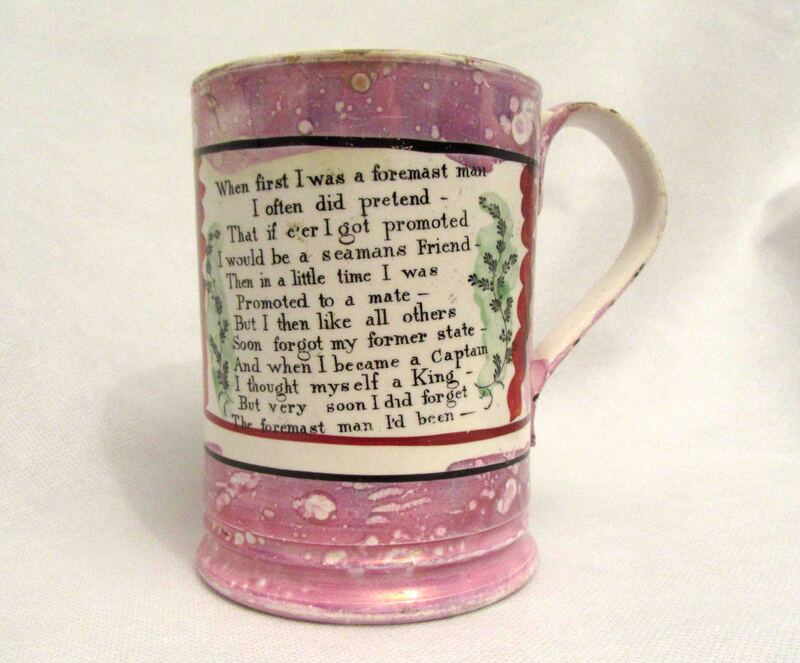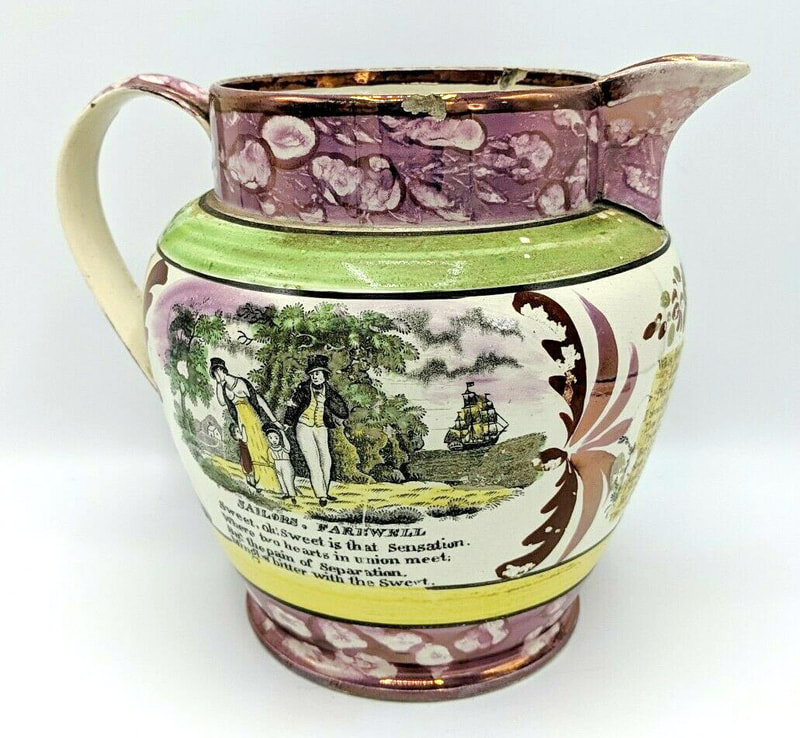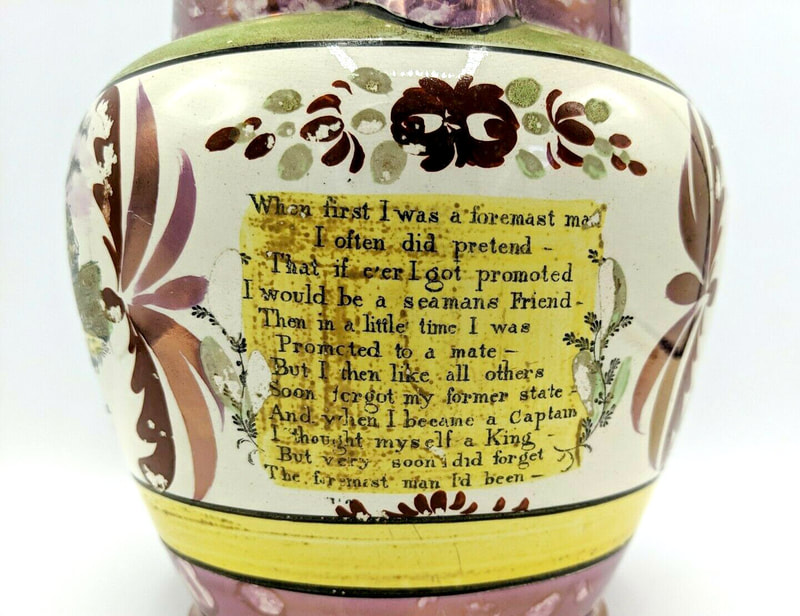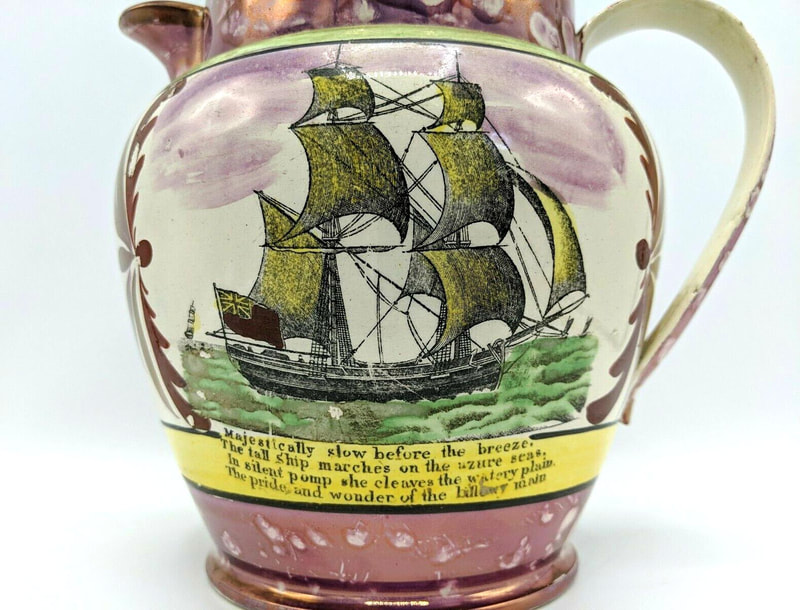When first I was a foremast man... – Sunderland
Garrison Pottery
This is the more familiar rendering of the verse with variations produced by several Sunderland potteries. The Dixon version has one row of marks on the sails of the ship.
This transfer appears on a large pedestal bowl, which although unmarked, is of a form and decoration typical of the Garrison Pottery, c1860.
Moore's Pottery
The printed mark is from the bridge transfer on the other side of the jug. The Moore version has two rows of marks on the lower sails of the ship.
The transfer as it appears on bowls from the 1840s. The first with one of The Bottle series transfers, and the second with a rare transfer titled The Author's Earnest Cry. Both bowls have a Moore & Co impressed mark.
The bowl below, from the Sunderland Museum & Winter Gardens, Tyne & Wear Archives & Museums collection, again has rare transfers: top left below, Ruins of Palmyra; top right, Friendly Society of Cordwainers. There is also an 'East View' of the bridge (bridge 8),
A typical Moore chamber pot with the transfer, paired with the New Sunderland Bridge, c1860.
Scott's Pottery
The Scott version has one row of marks on the sails of the ship. The jug below from c1850 with typical Scott flowers around the collar. Note the small vertical scratch that appears above the left-most leaf in the third detail. It also appears on the orange lustre bowl below.
The transfer is less clear on the mug below, but appears to be from the same transfer plate.
Although the bowl below is unmarked, the wavy lustre decoration and transfer with the month of 'September' in the centre, are typical of Scott's. This bowl has a 'Crimea' transfer to one side (not shown) and was made c1860.
The bowl below is again unmarked, but other examples with this orange green and red border, with a double transfer, have been recorded with the Scott impress.
Ball's Deptford Pottery
A plate with a degraded transfer and faded lustre typical of Ball's Deptford Pottery around the turn of the 20th century. The transfer comes from the same copper plate as the Scott bowl above.
Attributed to Seaham Pottery
The mug below, from the Sunderland Museum & Winter Gardens, Tyne & Wear Archives & Museums collection, is attributed in their catalogue to Seaham.
Unidentified pottery, perhaps Seaham or Tyne
An eel pot or butter dish from the 1840s. More work needs to be done to attribute these transfers.
The first mug has the same transfer as the eel pot above. The second is included because it has a bird transfer apparently from the same rare series. The lustre decoration perhaps suggests North Shields. However, Seaham decorated wares in a similar manner, and copper transfer plates are known to have moved from Seaham to North Shields (see the London-marked bowl below).
When first I was a foremast man... – Tyneside
Attributed to Carr & Patton, Low Lights, North Shields
Attributed to John Carr, North Shields – impressed London mark
This is the Seaham-attributed transfer (see mug above) on a bowl attributed to John Carr, c1860. The Great Eastern Steamship was launched in 1859. The bowl has a London impressed mark reliably attributable to North Shields. We know that transfer plates used at Seaham Pottery turn up at North Shields, c1850. John Hedley Walker, the owner of the Seaham Pottery, moved his operations to Carr's Hill Pottery near Gateshead in 1849. 'Carr's Hill' refers to a village, and not to the North Shields potter of the same name. However, this does provide a plausible explanation for why the copper plates might have migrated northwards to Tyneside.
Attributed to Robert Maling, Ouseburn Pottery, Newcastle
The first two mugs are likely earlier imprints of the transfer, and have elaborate enamel decoration. All three mugs are from the 1830s.
Below are three jugs with a fine imprint of the transfer.
A heavier imprint of the transfer from the same copper plate as above.
Below, the verse paired with rare Nelson and Britain's Pride transfers. The red squiggle decoration is found on items with the Life Boat and Grace Darling rescue, so can be dated to c1838, over 30 years after Nelson's death.
Redhead, Wilson & Co, Forth Banks, Newcastle Pottery – 1833–1838
The distinctive banded decoration on the items below is peculiar to Newcastle Pottery from the 1830s.
